Our in-depth look at the housing crisis





























Taking his place as Douglas County’s 34th sheri , Darren Weekly has taken steps to put more deputies with proper training on the frontline, including adding 27 deputy sheri positions that will be divided between patrol and detentions.
Weekly said his top priority is to reassess all commission positions in the department. e process started after Weekly was sworn in in early January.
To provide a better front end service for both deputies and citizens, Weekly has dissolved the Pattern Crimes Unit and moved them to the street.
“ ey were doing a good job, it wasn’t like they weren’t working, but I think we’d be better o putting those cops on the street in unmarked cars, answering calls for service,” said Weekly.
the applicants visited properties, landlords denied their applications. is happened over and over again.
the time ve years ago. “After that, we did the application online and sent it in without them being able to see the person.”



To keep up with the county’s growing population, Weekly is going to add an additional crime analyst, staying within the current budget. e analysts will look at the calls for service that come in, reports the deputies take and by using heat maps, will be able to identify where crime is likely to occur and provide that information to the deputies.
From Weekly’s perspective, every deputy sheri that is out on the street should be a pattern crimes deputy.
BY NINA JOSS AND HALEY LENA NJOSS@COLORADOCOMMUNITYMEDIA.COM; HLENA@COLORADOCOMMUNITYMEDIA.COM
A few years ago, Aurora Warms the Night, an Aurora-based nonpro t serving people who need housing, ran into a challenge when assisting its Black clients in applying for apartments. When

So the team decided to take a di erent approach, sending in White volunteers to check out the apartments rst.
“I would send one of our employees or people that were White to look at the apartment — to get the pricing, get everything, to make sure everything was available,” said Brian Arnold, who was executive director of the group at
Once the application got approved, the team at Aurora Warms the Night would let the real estate agents see the client was Black. Arnold said this process worked almost every time and became the organization’s own way of making a dent in the discrimination that people of color may face, but nd









If you’ve paid even just a little bit of attention to the news industry in the past decade, you know that it’s struggling. What you may not know is that community newspapers nationwide are closing at the rate of two per week.
e work of our journalists continues to be so critical for our society. We’re dedicated to keeping your city councils or school boards accountable and informing you about businesses and groups that make your community the great place where you have decided to live.
But the fact of the matter is, the materials that it takes to get a newspaper to your front door – the newsprint, the ink, the transporta-
tion fuel – have skyrocketed in cost.

So while it’s not in our nature to make essential news less a ordable, we’ve come to the point where we must raise our prices. Beginning March 1, the price of a subscription to any of our paid publications and for all-access digital will be $85 per year. (We will still o er a discount for readers over age 65.)
At less than $2 a week, we believe that’s still a reasonable priceto pay for news you often can’t nd anywhere else.
If you’re not interested in a subscription, consider a contribution to bit.ly/give2CCM, or at the QR code on this page.





Local news is a public good. Raising these prices is how we’ll do even more for our communities in 2023. I am grateful for your support.
A Lone Tree resident was pronounced dead from an apparent selfin icted gunshot wound, according to a Lone Tree Police Department news release.
At approximately 8:15 a.m. Jan. 17, the Douglas County Sheri ’s O ce
was serving an eviction notice to a resident in the Heritage Hills neighborhood when deputies reportedly heard a single gunshot from inside the residence, according to the release.
Deputies had thought the residence was vacant, the police department said in the release.
e Douglas County Sheri ’s O ce said via Twitter that the gunshot was heard from the second oor of the residence.
Deputies reportedly called for backup from the Lone Tree Police
Starting a Family? Growing a Family? Growing Old? Staying Young? Getting Married? Adopting?
Have any of the above been a concern of yours over the past few years? Let us at Davis Schilken, PC help put your mind at ease with our Love and Planning workshop. We can help give you a quick rundown on what type of things you need to consider with your Estate Plans as your family life changes. Don’t let circumstances cause worry. We will cover things like asset protection, marriage, divorce, blended families, and more.
Remember, there is always a solution – let us at Davis Schilken help you find a solution.

Join us for one of our Love and Planning Seminars!
When: Wednesday, February 8th 8:00am – 9:30am

Where: DTC Office 7887 E. Belleview Ave., Suite 820 Denver, CO80111
*Coffee and Bagels will be provided
When: Wednesday, February 22nd 11:30am – 1:00pm
Where: Denver West Office 1658 Cole Blvd., Bldg. 6, Suite200 Lakewood, CO 80401

*Sandwiches will be provided
Please RSVP to Sherice Ritthaler at saritthaler@dslawcolorado.com or call 303-670-9855
Department, and the Douglas County Sheri ’s O ce sent a “CodeRED” alert, an electronic emergency notication system that alerts residents of emergencies in their area.
At 8:51 a.m., the Douglas County Sheri ’s O ce said via Twitter that a shelter-in-place order was sent to houses in the Aspen Hills Circle area. At 9:14 a.m., the sheri ’s o ce said SWAT was en-route to the scene.
According to the release, SWAT breached the residence at approximately 10:05 a.m., where a male was
“found deceased from an apparent self-in icted gunshot wound.” Nate Jones, the City of Lone Tree’s communications director, said in an email that the individual was living at the address of the residence in Heritage Hills.
e shelter-in-place was lifted and there is no longer a threat to the public, the police department said in the release.
e Lone Tree Police Department is conducting an investigation into the death.
Buddy, a 13-year-old obsessivelyloving cat, was chosen by the ARM & HAMMER Feline Generous program to be one of the “Happily Furever After” sweepstakes winners in November.
More than 5,500 photos and videos of “purrfectly impurrfect” cats were submitted and Buddy, from Highlands Ranch, was one of the ve winners across the nation. Buddy and his owner, Janine Zarate were awarded with a year long supply of ARM & HAMMER cat litter, along with some cat toys, socks and are awaiting a portrait of Buddy.
In addition, each winning pet parent nominated a shelter to receive $10,000. Zarate chose the Rocky Mountain Feline Rescue in Denver where she volunteers.
We don’t usually get donations that big, so it’s like, we can really help some kitties with that,“ Rocky Mountain Feline Rescue kennel technician Amanda Schneider said. “We have some medical bills for some of the sick kitties here, so we’re putting that money towards paying those o .”
During the campaign, cat owners who adopted a shelter cat were invited to share their own story to inspire others to adopt. e Feline Generous program was created to help rescue cats who are often overlooked or misunderstood due to their appearance, physical limitations, age or personality.

“(Buddy) doesn’t have anything physically wrong with her, so she’s not imperfect that way…she is just a very special cat,” said Zarate. “But she has a misunderstood personality.”
Buddy is scared to death of strangers but shows her kitten-like personality at night when she is opening drawers and cabinets.
While living in Minnesota, Zarate and her family went to a shelter in 2010 to look for a kitten for her 3-year-old son to grow up with. Looking around the shelter, there were not that many cats, but her son saw a black kitten in the back corner of a lower cage and after a short visit with her, they adopted her. Only thing is, Buddy has become attached to Zarate.
“She’s my little stalker,” said Zarate.
In November, Zarate got an email from the Rocky Mountain Feline

Several metro Denver law enforcement agencies are seeking help identifying a suspect who they believe robbed four banks earlier this month. e morning of Jan. 9, a suspect robbed the Chase Bank at 7605 W. 88th Ave. in Westminster. e following morning, the same person is suspected of robbing three more banks, including the First Bank at 8901 E. Hampden Ave. in Denver and US Bank at 8441 W. Bowles Ave. and First Bank at 6701 S. Wadsworth Blvd. in unincorporated Je erson County. An FBI crime alert described the suspect as a white male in his 20s between 5-foot-6 and 5-foot-10 tall. He has a slender build, dark hair, brown eyes, “stubble” facial hair and black eyeglasses with a thick frame, according to the alert.
FROM PAGE 2
Rescue about the contest. She picked a picture of Buddy with food on her face and submitted it, along with the organization she wanted to support.
“I was just really thrilled because the money goes to the Rocky Mountain Feline Rescue and just shelters and rescue organizations, they need
e suspect approached the teller, made a verbal demand for money, threatened the teller and then ed the bank, the alert said.
e suspect did not display a weapon, according to a Facebook post from the Je erson County Sheri ’s O ce.
Images of the suspect show him wearing di erent baseball caps and jackets or hoodies during robberies.
e FBI’s Rocky Mountain Safe Streets Task Force and Metro Denver Crime Stoppers are working with local police agencies on the case. e FBI is involved because the Federal Deposit Insurance Corp., which insures deposits, is considered a victim, said FBI Denver spokesperson Vikki Migoya.
Anyone with information on the suspect is encouraged to call Metro Denver Crime Stoppers at (720) 9137867, 24-hour anonymous tip line. Callers could earn up to $2,000 for information that helps solve the crimes.
money all year long, so this is just awesome for them,” said Zarate.
Black cats tend to have a lower adoption rate in the United States. ey are often seen as bad luck, not friendly and have been associated with witchcraft.
“ e only thing that’s bad about a black cat is if you’re in a dark room, you don’t know where they are,” said Zarate. “ ey’re the most loving, wonderful cats that are out there so adopt a black cat, don’t ignore them.”
The Strive to Thrive Resource Fair will be held on Tuesday, Jan. 31 from 4-6 p.m. at the Calvary Chapel, 1100 Caprice Drive in Castle Rock. Enjoy a free hot meal and access valuable resources from more than 20 different organizations. Individuals and families are welcome to attend. For more information, visit douglas.co.us and search for Strive to Thrive.
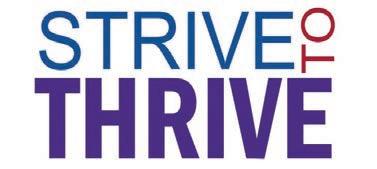
Emergency assistance is available for veterans struggling with housing (mortgage/rent), transportation, employment, healthcare or other emergency needs. To apply for the veteran assistance funds, visit douglasveterans.org or call 303-663-6200
Business Personal Property Tax Declarations may be filed online at DouglasFilesOnline.org Business owners who own or lease business personal property with a total market value of greater than $52,000 must report the property to the County Assessor. For more information, visit douglas.co.us/assessor
Visit douglascotax.com to view parcel details, prior year payment history, pay taxes and more. Still have questions? Visit douglas.co.us/treasurer for additional information.
Whether you’re a young person looking for career guidance, have recently been separated from a job or are considering a new career path, Arapahoe/Douglas Works! provides a variety of no-cost employment assistance services. For more information and to get started, visit

Information nights are open to anyone interested in learning about foster care. Information nights are free and via Zoom on Feb. 6 and Feb. 20 from 6-7:30 p.m. For information, call 303.636.1KID or register online at collaborativefostercare.com and select Information Night.
Need a birth or death certificate?
Records can be obtained in-person by visiting the the Douglas County Health Department at 410 S Wilcox St. No appointments are necessary. Or, visit douglas.co.us and search for Vital Records for ways to obtain records online, by mail or by email.

“So they all have the data and the information to know where to be, where crime is occuring, not only for crimes, but also tra c concerns, tra c complaints and crashes that are occuring out there,” Weekly said.
Another goal within the hiring process is to concentrate on making the department more diverse, Weekly said. Whether it’s civilian or commissioned, the new sheri wants the hiring unit to go into other parts of the metro area and recruit people from all di erent backgrounds to apply for positions within the organization.
After being sworn in as sheri , Weekly said Douglas County is at a crossroads.
“We have homelessness that’s growing in Douglas County,” said Weekly. “Douglas County is not used to that. Douglas County is not used to having o cer involved shootings. Douglas County is not used to having residential burglaries. It does now, our community has grown and crime has encroached.”
As sheri , Weekly wants to focus on educating the public about crime trends in the community. rough Twitter and Facebook, he plans to push heat maps out and other crime information so people are cognizant of what is taking place around them.

Homelessness has been a growing concern in Douglas County and as a stakeholder of the Homeless Initiative, Weekly is looking to take a
proactive approach.
According to Weekly, in order for the county to enforce a camping ban, there needs to be a place for these individuals and their property to go. Weekly said that he is not advocating for a homeless shelter in Douglas County.
“We don’t want Douglas County to turn into Denver,” said Weekly. “The majority of our citizens don’t want a homeless encampment where their kids have to go around the encampment to catch their bus for school.”
e Homeless Engagement, Assistance and Resource Teams - navigators who work in partnership with law enforcement to respond to community calls regarding the homeless - have found that many people they come into contact with decline assistance and many of them have drug, alcohol or mental health issues.
“We can’t arrest our way out of this problem, nor do
we want to, but we’re going to enforce the law where necessary and hold people accountable who do break the law,” said Weekly.
School shootings and mental health Weekly also takes the threat of school shootings very personal.
“Not only with schools, but just the community in general,” said Weekly. “I don’t want to lose one single kid.”
According to Weekly, the schools need to be hardened and the sheri s department needs to be aggressive in terms of looking into information that comes in and following up on it immediately until it is exhausted.
To increase the safety of kids in school, Weekly wants a school resource o cer in every school, including elementary schools.
Weekly was the tactical commander of the SWAT team that responded to the Arapahoe High School shooting in 2013. He said

there was an inability to communicate with other rst responders, which is why he wants to have a mass training exercise with the police department and re department within the rst year of his tenure.
“We also need to ensure that our deputies are trained in active shooter response, and quite frankly, it’s called active killer response,” said Weekly. “If you’re the only deputy sheri and you’re there and your cover is a little ways out, these deputies know they’re going in by themselves.”
As Weekly is a staunch 2nd Amendment supporter, he does not believe the Red Flag Law needs to be expanded, however, he does see circumstances in which an extreme risk protection order could be valid.
He said it is tough to decide if a case is one where they need to act on a risk protection order or not.
“So as the sheri , I will defend the 2nd Amendment
rights of our citizens,” said Weekly. “I will not move forward on one of these unless there is an imminent threat to loss of life.”
Weekly said if an extreme risk protection order is executed, the law implies that the person should also be taken on a mental health hold at the same time and that this has not happened.

When it comes to mental health, Weekly intends to increase the community response team by three within the rst year. He said during his time in law enforcement, he has seen improvement in terms of recognizing mental illness and de-escalating situations. Moving forward, Weekly wants to make sure every deputy sheri on the street is also crisis response trained.
“We want to make sure that our deputies have the tools in their toolbox and the knowledge to de-escalate,” said Weekly. “I’m not telling you that de-escalation is always going to happen, so a lot of the time, the circumstances will dictate how that goes.”
Ensuring that the community can feel they can trust the sheri ’s o ce and that the department is responsive to their concerns, Weekly would like to bring back neighborhood crime watch meetings. He wants the citizens to feel like they have a good relationship with the department and can have open communication.
“I want to improve the overall professionalism of the organization,” Weekly said. “It’s not broken, but I think we’ve got room for growth and I want to be an agency that every agency in Colorado is looking to.”




 BY MCKENNA HARFORD MHARFORD@COLORADOCOMMUNITYMEDIA.COM
BY MCKENNA HARFORD MHARFORD@COLORADOCOMMUNITYMEDIA.COM


Douglas County Commissioner Lora omas led a complaint with the Colorado Secretary of State’s O ce over political mailers attacking her on a number of topics and promoting a replacement.
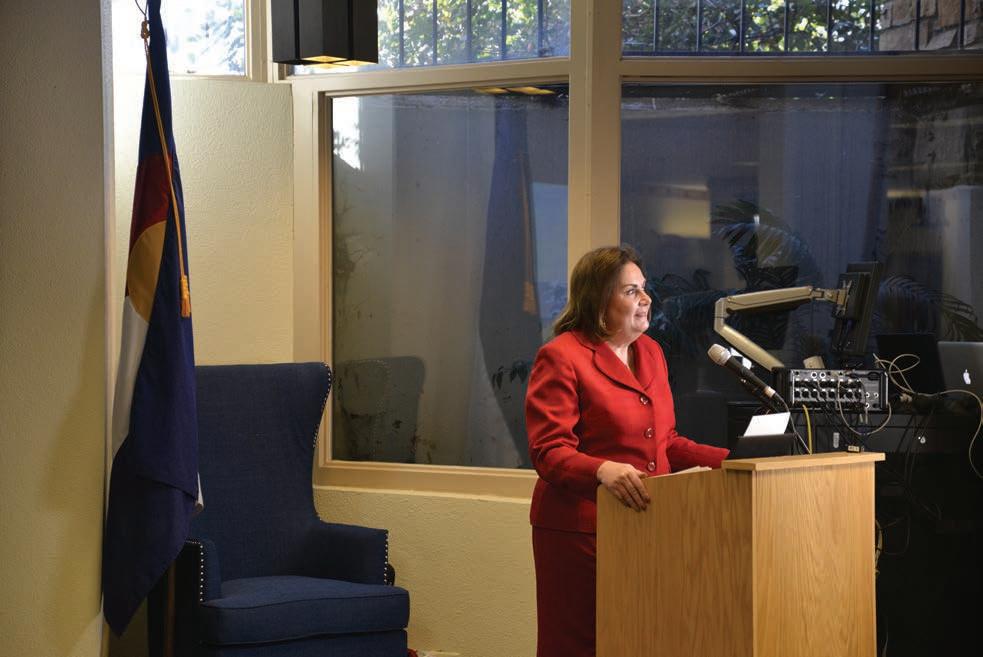
In December and January, an unknown number of Douglas County residents received postcards that accused omas of wasting taxpayers’ time and money, as well as supporting Democrats.
One postcard reads “You’re being scrooged by Lora om-








as” and asks voters to support state Sen. Kevin Van Winkle to replace omas. omas is term-limited and can’t run for her commissioner seat in 2023. Another postcard claims omas is working with Democrat state Rep. Bob Marshall to expand the Board of County Commissioners from three people to ve people.
omas led a complaint on Jan. 9 because the postcard does not include a paid-for-by disclaimer and doesn’t indicate who sent the mailers outside of the postage license naming Vistaprint, a Nevada printing company.
omas told Colorado Community Media that she didn’t want to comment on her com-
plaint while it’s under investigation.
omas’ complaint says that she doesn’t believe Sen. Van Winkle is involved despite the postcard touting his name.
One of the mailers also calls out the roughly $22,000 the county has spent to investigate allegations that omas inappropriately released a private anonymous letter sent to the commissioners. Two investigations, which were done at the direction of commissioners Abe Laydon and George Teal, concluded omas’ actions weren’t illegal.
e Colorado Secretary of State’s O ce has yet to rule on whether the postcards violate campaign nance laws.


With the list of Colorado libraries that temporarily closed due to methamphetamine contamination at three locations, some residents asked: What’s the health risk of people who were recently in these spaces?
In late December, Boulder Public Library became the rst to temporarily close after testing found levels of meth in its restroom exhaust vents. Later, several areas of the Boulder RTD station closed due to contamination as well.
On Jan. 11, the Englewood Public Library and portions of the Englewood Civic Center temporarily closed after test results found meth contamination.
Most recently, Littleton’s Bemis Public Library temporarily closed Jan. 18 after testing found elevated levels of meth contamination in several bathrooms.
Meth is a highly addictive stimulant drug that is commonly either ingested, smoked or injected, said Eric Hill, an emergency medicine physician and the EMS medical director for the Medical Center of Aurora.


However, experts say the risk that secondary meth contamination in public spaces poses to the public is fairly low.
“We don’t have any data to say that there’s a high public health risk from secondary meth exposure from a public space … those aren’t typically presenting to emergency departments,” Hill said, noting people may feel some symptoms but usually not severe enough that they go to the emergency room.
Physical symptoms of meth can include increased heart rate, eye irritation if there is chemical exposure in the air and a slight cough, Hill said. Psychological impacts may include paranoia, having an out-of-body experience and hallucinations.
Meth exposure could also cause increased jitteriness, irritability, fatigue, moodiness, a skin rash from irritation or trouble sleeping, said Karin Pacheco, an allergist in the Division of Environmental and Occupational Health Sciences at National Jewish Health.
“But people don’t spend that much time in a bathroom,” she said. “So your actual exposure would be fairly low.”
Pacheco said the body breaks down methamphetamine quickly, so even if symptoms were to arise due to secondhand exposure, they would likely reside in one or two hours.
According to Boulder County’s website, there is a low probability of secondary exposure to methcontaminated surfaces causing someone to experience symptoms, “especially in relation to exposure in a public setting.”
Arapahoe County Public Health



also said health risks to the general public are considered low.
roughout his 10 years of working in the Denver area, Hill has never seen a patient have a large symptomatic exposure from secondary meth exposure.
“ ey may get a little bit,” he said, explaining a person may feel some symptoms if someone was smoking meth near them. “But as far as causing, like, acute psychosis and that kind of stu , that’s extremely
uncommon.”
Contamination in restrooms and vents When it comes to meth contamination that has been detected in the exhaust vents and restrooms of libraries, Hill thinks the health risk is low.
“I seriously doubt someone would be symptomatic related to exhaust vent residue in an exhaust vent. It
certainly means that, yes, there was methamphetamine smoked in there, but I think the public health risk is fairly low on that,” he said. “I’ve never seen one (patient), where they were just in a public bathroom, get exposure (and) having true symptoms from that.”
















Pacheco agreed that the contamination in air vents is likely from people smoking it, as it would be unlikely for someone to have time to cook meth in a public restroom.
Mark Stephenson, a retired hazardous materials emergency response team chief at Aurora Fire Rescue, added that surface contamination could arise from methamphetamine sitting or spilling on a surface.
Pacheco said a person would probably be more likely to get secondhand exposure from touching a surface than from breathing the air in a contaminated restroom. If meth has been smoked in a space, the aerosols can settle on surfaces.
Hill explained that if there was a large amount of methamphetamine contamination on a surface and a person was to touch their hands to the surface and then eat something, they might get symptomatic from that.

“You could get some secondary effects from that,” Hill said. “I wouldn’t expect it to be a long-term issue for someone unless they’re really frequently exposed to it, over and over and over again, like if they’re living at an apartment with someone who’s using it.


Pacheco pointed out that children might touch many surfaces in a public bathroom, putting them at a greater risk. In addition, the same dose would a ect a child more than an adult because of their size.
When it comes to meth contamination being airborne due to someone smoking it nearby, a person would have to be really close to that location within a relatively close time to when the smoking occurred in order to inhale it and have symptoms from that, Hill explained.
“If you’re in a bathroom where you’re in there for a few minutes, the odds are much less,” he said of developing symptoms. “Not to say you couldn’t get any — if you touched some and you ingested it, yes, you could get it, but certainly the odds are less.”
If a person does start feeling symptoms, they can always be evaluated for it, Hill said.
“Even if you don’t seek medical care and you feel a little o or your heart (is) beating a little harder … most times, that does just go away by itself,” Hill said. “Methamphetamine, there is no antidote for that. It’s just a matter of waiting it out.”
Do test results mean more people are doing meth?
Although recent test results show methamphetamine contamination in public spaces, Hill said he doesn’t think it’s a new occurrence.
“I would expect that this has been an ongoing thing for a while. I think we’re just now looking at it,” he said. “I’m not aware of some kind of massive rash of secondary meth exposures presented to ERs all around the city in the last week or two, so I


don’t think it’s a … new thing that we’re seeing.”












He noted he hasn’t seen an uptick in meth recently, though it is “a huge problem.”


“It’s one of the highest used illicit drugs we have in the metro area. I see it several times a day, methamphetamine psychosis,” Hill said.
Pacheco agreed that the new ndings represent the high levels of meth use in society, which she said has been an ongoing problem for years.
“It’s like many things: if you don’t know what to look for, it isn’t there,” she said. “And then if you start to look for it, suddenly it’s everywhere. But I don’t think this is a di erence in use, right? It’s a di erence in detection.”







Regarding the ongoing conversation on how to best mitigate meth usage in public spaces and prevent a public space that’s been cleaned from getting contaminated again, Hill said he’s unsure of how to safely do that.
“I don’t know of anybody that has any kind of, like a smoke detector for meth or if someone’s smoking it then it alerts the crew or something — I’ve never seen anything like that, so I don’t know how you protect your space,” Hill said.
When asked if he has an opinion on whether public spaces and libraries should be doing regular testing for meth contamination, Hill said he doesn’t have enough information to draw an opinion about the risk.
He thinks routine screenings and cleanings of public spaces would be worthwhile if public health experts determined there was a signi cant risk of secondary contamination to the public.
“I think it’s certainly ne to clean the space, but as far as a routine method to say that we should always endorse a policy where we’re going to routinely screen these places and decontaminate them — I don’t know if that would be impactful to the public health of the community to do such a thing,” Hill said.
Pacheco, on the other hand, thinks routine testing would be a good step for public spaces because contamination can cause short term impacts to people’s health, even if it’s not very likely.
She also said measuring contamination levels would give “an indirect measure of how these spaces are being used” and could be a deterrent for people who are using the spaces for drug use.
But beyond the minor public health concerns, Pachecho sees the recent contamination levels as a sign of a larger problem. She noted that, while drug use is very common and addiction can touch anyone, there is a tie between drug addiction and people who are facing homelessness.
In order to address problems related to addiction, she said we must also address housing, education, wages and more.
“If you want to x a problem, you have to understand why it’s happening,” she said.


“ e people smoking meth… they’re not from another planet,” she said. “And I think we have to have some empathy for them. Which is not to say to permit it, but to understand that it’s a bigger problem that the whole society has to solve.”








Kristina and Graham Fuller rst presented their new musical, “In the Trenches: A Parenting Musical” as part of the fall JAAMM Festival at the Mizel Arts and Cultural Center in Denver — directed by Robert Michael Sanders, who leads the sta at Town Hall Arts Center.

e Fullers grew up in Boulder, attended CU and sang together in an a capella group there, but didn’t date until they both moved to the East Coast for graduate school, according to a story in Colorado Parent magazine.
Happily, the new work is open at Littleton’s Town Hall Arts Center through Jan. 29, so a south audience can enjoy it. It was workshopped at New York’s venue Feinstein’s 54 Below and will appear at Town Hall through Jan. 29.
e notice we received says it is for adults, so wait for another production to bring the kids. (Several are scheduled.)
In addition to the Fullers, the cast includes Vidushi Goyal and
Nathan Petit as the kids, Anne Terze-Schwarz as the Single Friend, Scott Radban as Todd, Fletcher Kim and Sophia Dotson as swings for the children, and Bridget Burke and Josh Lostrobe as Mom and Dad swings.
By day, Graham Fuller is a practicing attorney and Kristina teaches voice and theater workshops and master classes via her home studio. She majored in performance skills in voice at CU and attended graduate school at NYU.
e couple decided to write their own show, related to their life today, with a variety of songs and stories inspired by their current lives, which include children Daniel and Sophia ...
It was rst co-produced by CenterStage, Louisville, in 2019.
ey wrote skillfully enough to win journalist John Moore’s “True West” Award for 2022.
Pianist/Music Director Dan Graeber heads a small band, including Jon Cullison, bass; Braxton “BK” Hahn, drums; Russ Collison, guitar and a tba percussionist.
Remaining performance dates: Jan 26, 27, 28: 7:30 p.m.; Jan 29: 2 p.m.
Town Hall’s box o ce is open Tuesday to Friday, 10 a.m. to 5 p.m.; Saturday 10 a.m. to 1 p.m. and during performances. 303-794-2787, ext. 5. townhallartscenter.org.
Th e Death of Napoleon” plays through Feb. 18 at Buntport Theater, 717 Lipan St., Denver and is the 51st original play written by this clever crew. “Loosely based” on historical facts, they claim ... Set on the island of St. Helena, where Napoleon was exiled, the former emperor “argues with insects and 12-year-old girls, making unreasonable demands of his personal chef and refusing to put his teeter-totter to good use.” Tickets are (name your own price). Mask-wearing is requested. Performances: 7:30 p.m. Fridays and Saturdays and Monday, Feb. 13; 3 p.m. Sundays Feb. 5 and 12. 720-946-1388, buntport. com.
SONYA’S SAMPLER
colors in an Impressionistic manner. The workshop will be held at Littleton First Presbyterian Church, 1609 W. Littleton Blvd. Cost: $35 for Heritage Fine Arts Guild members and $50 for non-members. Space will accommodate 20 students. heritage-guild.com.
The Philip Glass Ensemble performs at 7:30 p.m. Feb 9 at the Newman Center, 2344 E. Iliff Ave., Denver. Performance of Glass’ “Music in Eight Parts,” which was thought to be lost, along with selections from “Glassworks,” “The Photographer” and “Einstein on the Beach.” 303-871-7720, newmancenterpresents.com.
Watercolor Workshop is presented by the Heritage Fine Arts Guild from 9 a.m. to 3 p.m. on Feb. 13. The instructor will be Patricia Barr Clarke, who paints with vivid
“acts of faith” by David Yee, directed by Pesha Rudnick, plays through Feb. 5 at the Aurora Fox Arts Center, 9900 E. Colfax Ave., Aurora. Betty Hart plays Faith in this story about good and evil. Performances: 7:30 p.m. Thursdays, Fridays, Saturdays; 2 p.m. Sundays. AuroraFoxArtsCenter.org, 303-7391970.
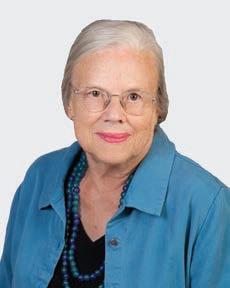

Curious eatre presents the regional premiere of “Alma” by Benjamin Benne, directed by Denise Yvette Serna, through Feb. 18. Developed at Denver Center eatre Company’s New Plays Summit in 2020. Laura Chavez plays Alma and Iliana Lucero Barron plays Angel. Curious is at 1080 Acoma St., Denver. 303-623-0524, curioustheatre. org.
Used book sale at Smoky Hill Library, 5430 S. Biscay Circle, Centennial: Jan. 26 to 29.

e annual Littleton Public Schools Art Show is at Colorado Gallery of the Arts at Arapahoe
Community College, 5900 S. Santa Fe Drive, Littleton. Hours: Monday to Friday: 9 a.m. to 5 p.m.; ursdays until 7 p.m. Saturday, Feb. 4, noon to 3 p.m. e gallery is on the northeast side of the building, in the Annex.


Colorado Wind Ensemble

e Colorado Wind Ensemble celebrates its 40th anniversary in 2023 and will feature music from the 2000s with guest conductor-laureate Dr. Matthew Roeder at 7:30 p.m. Feb. 11 at the King Center, Auraria Campus, 855 Lawrence St., Denver. Complimentary parking in the 7th Street Garage, 777 Lawrence Way — enter from 7th and Lawrence. Parking validation tickets will be available at the box o ce for this location only.






Reminder: “Wild!” Studio Arts Quilt Associates exhibit at Curtis Center for the Arts, 2349 E. Orchard Road in Greenwood Village. Spring Awakening Arts Camp on Jan. 31.



303-797-1779.




Musical in Golden Playing at Miners Alley, 1224 Washington, Golden: “ e Great Trailer Park Musical,” through March 5. Also: Children’s eater: “Mother Goose,” written and directed by Kate Poling, Feb. 4-March 4. 303-935-3044, minersalley.com.
New exhibit at History Colorado, 1200 N. Broadway, Denver: the Treaty of Guadalupe Hidalgo will arrive on Feb. 2, the 175th anniversary of its signing, and will be displayed in the “Borderlands of Colorado” exhibit until May 22, when it will be returned to Washington, D.C.. Signed on Feb. 2, 1848, it ended the Mexican-American War and set the stage for western expansion of the U.S. by shifting the political border south from the Arkansas River to the Rio Grande and west to the Paci c Coast.
This publicity image for Buntport Theater’s “The Death of Napoleon” is an altered version of “Portrait of Napoleon at Fontainebleau” by Paul Delaroche.

Limited time o er. *APY = Annual Percentage Yield. e minimum balance to open the 7-month, 17-month, or 27-month certi cate and earn the advertised APY is $500. A penalty may be imposed for early withdrawals. At maturity, the 7-month CD will convert to Premier Member’s 6-month regular, the 17-month CD will convert to Premier Member’s 12-month regular, and the 27-month CD will convert to Premier Member’s 24-month regular, xed rate CD and will earn the prevailing interest rate in e ect at time of renewal. is special rate o er is not available for Individual Retirement Accounts (IRAs). Rates apply to personal and business accounts only. Membership eligibility required.




Lora omas.
BY HALEY LENA HLENA@COLORADOCOMMUNITYMEDIA.COMAimed to serve the needs of citizens and educate them on proactive approaches to one’s health, Douglas County hosted a town hall to provide details on the new health department.
e Jan. 19 town hall had nearly 2,000 people join online. Questions from the public included how childcare facilities and restaurants are inspected, how homeless people in the county are able to access community health services, and if the county has nalized a policy regarding gray water dumping.
e 2023 budget for the department is $7.4 million. Of that total, $4.5 million is from state or federal funding, $2 million is coming from Douglas County’s General Fund, and $900,000 from service fees.
“Overall, we are saving $700,000 a year in taxpayer money over our previous annual contribution to TriCounty Health,” said Commissioner and Vice President of the Board of Health,


Governed by the Board of Health, the Douglas County Health Department has been approved for 41 employees. At the time of the town hall, 35 positions had been lled.
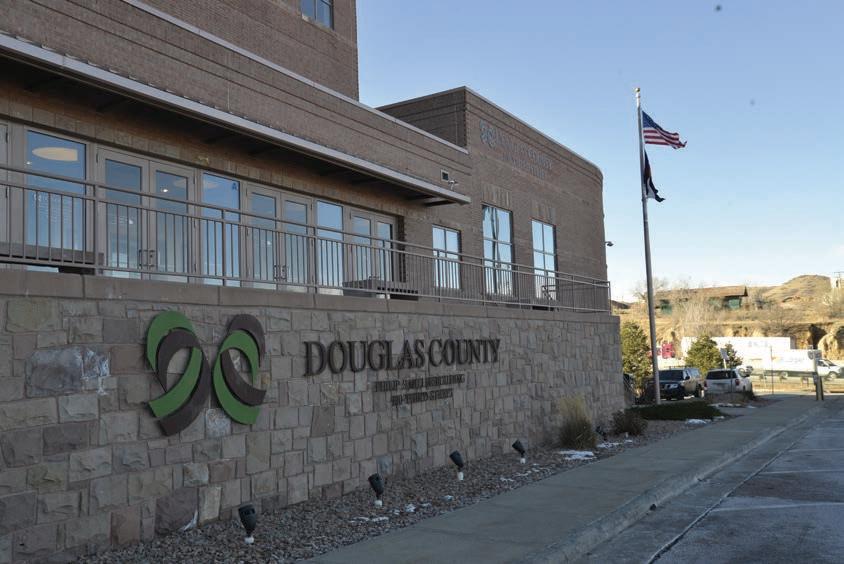
According to the director of the health department, Michael Hill, they are going through a careful interviewing and hiring process.
One of the services that will be provided is community health and clinical services.


“I oftentimes say when we’re talking about community health, we’re really talking about relationships and partnerships,” said Assistant Director of Community Health Laura Larson.
Within the community health division, the department will provide clinical services through a federally quali ed health center, Stride Community Health Center, which has a location in Parker.
In December, three Douglas County residents utilized their services.
As part of community health, education will include information, awareness and promotional programs that cover chronic disease prevention and management, substance
misuse, suicide prevention, fall prevention, sexually transmitted infection prevention and tobacco education.




In addition, there is a maternal health program, a nurse support program in partnership with the Department of Human Services Child Welfare program and a special supplemental nutrition program, otherwise known as Women, Infants and Children (WIC).
A partnership between the Sheri ’s O ce and the county’s Mental Health Initiative will focus on behavioral health, suicide preven-
tion and substance misuse. Part of the Mental Health Initiative is the Community Response Team in which behavioral health and law enforcement are actively addressing the needs of those in crisis.

It is planned to have nine community response teams, two dedicated to children in school by the end of the year according to omas.
Other areas of service include Emergency Preparedness and Response, Disease Surveillance, Vital Records - which includes birth and death certi cates - and Environmental Health, which
focuses on inspections of restaurants, food trucks, grocery stores, pools, childcare facilities and septic systems.
To learn more about the services provided by the health department and questions asked throughout the town hall.
e town hall panel also included County Commissioner and Board of Health member George Teal; Environmental Health Assistant Director Caitlin Gappa; Emergency Preparedness and Disease Surveillance Manager Jon Surbeck; and Health Administration Manager Steve Montanez.
ADR: Adaptive Gentle Yoga @ 6:45pm
Feb 2nd - Mar 9th
Denver Parks and Recreation (ATH), 2680 W Mexico Ave., Denver. 720-913-0654

RWQB 10 Week Program @ 9am / $2800

Feb 4th - May 13th
Cherry Creek High School, 9300 E Union Ave, Greenwood Village. 253-973-8170
Fleming Mansion Walkthrough (for permit holders only) @ 6pm
Fleming Mansion, 1510 S. Grant St., Den‐ver. 720-913-0654
6 Million Dollar Band @ 8pm
Wild Goose Saloon, Parker
SECRETTO
@ 8:30pm / $60 Stampede, 2430 South Havana, Aurora

John Hodgman

@ 7:30pm
Gothic
RJD2 @ 9pm



Gothic Theatre, 3263 S Broadway, Englewood
RMRR Trophy Series, February 5th 2023 - 7 Mile and 5K Race at Reynolds Landing in Littleton

@ 9am / $10-$10 6745 S. Santa Fe Drive, Littleton
Kids’ Zone: Community Helpers (37 yrs) W/S23
@ 6pm
Feb 6th - Feb 27th
Parker Recreation Center, 17301 E Lincoln Ave., Parker
YS: 3-4 Sports Experience @ Harvey Park @ 8pm
Feb 6th - Feb 27th
Harvey Park Recreation Center, 2120 S. Tennyson Way, Denver. 720-913-0654
Kids' Zone: Very, Very Valentine ( 3-




Douglas County Garden Club Meeting - February 7 in Castle Rock
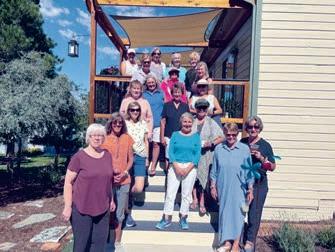
@ 1pm






Douglas County Libraries, 100 South Wilcox Street, Castle Rock. douglascountygardenclub@out look.com

Parent Guide to ADHD: ADHD in the Classroom (18+ yrs) @ 1:15am Feb 8th - Feb 7th

Parker Recreation Center, 17301 E Lincoln Ave., Parker
Ladies Night @ 6pm / $5 Stampede, 2430 South Havana, Aurora
John Brewster Music: Songwriter Showcase at Herman's Hideaway (Solo) @ 7pm
Herman's Hideaway, 1578 S Broadway, Denver
DJ Rockstar Aaron: Forbidden Bingo at 'Bout Time Pub & Grub @ 8pm
Bout Time Pub & Grub, 3580 S Platte River Dr A, Sheridan
Vanimal Kingdom Duo at Lincoln Station @ 6pm

Lincoln Station Coffee/Pizza/Mu‐sic, 9360 Station St, Lone Tree
Larry & Joe: WORKSHOP: Venezuelan Strings @ 6pm Swallow Hill Music, 71 E Yale Ave, Denver Outta Nowhere @ 7pm Stampede, 2430 S Havana St, Aurora
In recent weeks, Colorado Community Media unveiled the long-time-coming series – Long Way Home. roughout most of 2022, all our reporters from all regions worked on developing an in-depth look at the housing crisis.


is look took us to people in focus groups, interviews, research and a lot of eye-opening discoveries. It is something I am proud to have been a part of given what we can share with the public in terms of how the housing issues we are seeing now were not developed in one year.
In fact, these issues we are seeing are decades in the making.
We broke down the people a ected by the growing crisis. e single mom is struggling to pay rent. e homeless man who ran into some bad luck and just can’t get back on his feet. Black families are treated di erently in applications for rent and mortgage.
Thelma Grimesese articles that are running over four weeks mean a lot to our reporters because as our teams continued working and getting educated, they truly began to understand that a crisis doesn’t develop overnight and xing the problems will not happen soon.
When our Baby Boomers cannot sell their home and move to smaller living quarters – there is a problem. Why? Because those homes they would vacate would be useful to growing families – a supply issue becomes prominent.
Pricing is another issue. When a home my family purchased eight years ago has doubled in value – It’s not as great as it sounds. You see, the problem is, if I had to buy the same home today – I couldn’t a ord it. at means I also cannot sell in this market. I cannot sell it because I may make money on my house but it would have to be applied to another ridiculouslypriced house somewhere else. Can’t do it. Can’t a ord it.

ese problems point to supply problems too. When no one is selling – there is nothing for others to buy. en, you keep digging. You learn that rst-time homes are so overpriced that couples can’t a ord to move up in the world. ey have to keep renting or living with parents. is is going to lead to bigger problems in the future if solutions are not created.
One of the parts of the series, in a story that comes out this week, that intrigued me most is how the growing housing crisis impacts the American dream. Sure the American dream of owning a home and building a family is somewhat of a cliché, but it is one we’ve had for a long time.
When families no longer believe they will ever have enough money to own a home. When families can’t get ahead in this country no matter how successful they are – the American dream cannot survive. Instead, they rede ne and reestablish what the American dream is. Wil that help or hurt our economy? Will a lack of families moving into our communities cause schools to close at higher rates?
When local communities are making it nearly impossible for our working-class citizens to get a home and live comfortably – they will leave.
at means employee shortages and more problems in the future.

e problem with the ongoing housing crisis is it will and does touch all levels of our lives and ignoring it or hoping the market will just correct on its own is never going to happen.
LINDA SHAPLEY Publisher

lshapley@coloradocommunitymedia.com
Recently I went back and reread the book “Sizzlemanship” by Elmer Wheeler. Elmer Wheeler is credited with being one of the original pioneers of sales skills training and motivation industry. It’s classic stu and de nitely worth the read. e point, as you can guess by the title, is to sell what your product or service does, not what it is, meaning sell the sizzle and not the steak.
In today’s world we think about the sizzle as the KPIs, Key Performance Indicators, or the results that the company or the person purchasing the product or service might experience. For businesses and sellers, it’s making sure that we are focusing on that old radio station that buyers tune into, WIIFM, standing for “What’s in it for me.” Making sure that we know exactly how our product or service will contribute to the achievement of their goals and success.
Elmer Wheeler was way ahead of his time as we think about how business owners, entrepreneurs and salespeople think and sell. When we put the customer’s interests and results ahead of corporate pro t or commission checks, we will undoubtedly sell more of our products and services. Changing the station from WIIFM to tuning into WIIFT, “What’s in it for them.”
Now, walk with me through the transition from sales to our everyday lives. How many times are we trying to sell someone on an idea, or to help out, volunteer, join an organization, or anything else where we are seeking to have our family or friends get involved with something or buy into our idea? Most times we focus on the help we need instead of what they
ERIN
AUDREY
ERIN
LINDSAY
might be able to experience by participating. If you have ever been in the role of a leader in any not-for-pro t organization, committee, or other function at your children’s school or at the house of worship that you attend, you probably know exactly what I am talking about. Companies looking to get better in any area of business might consider thinking about the sizzle as looking at increasing revenues or increasing their average sales price. Maybe they are focused on improving margins, win/loss ratios, or sales behaviors. ey may look to expand through upselling and gaining more market share. Or they may be interested in reducing sales cycle time or customer attrition.
But we as individuals also have values and things that we might consider our sizzle when deciding what is in it for us, or why we may choose to get involved. When we are thinking about getting better in an area of our lives we may look at increasing prosperity, strength, or endurance. We may have a desire to improve our health, happiness, or relationships. What gets us excited may be our pursuit of expanding our knowledge, our network, or our security as we think about retirement. And maybe for some of us it’s about reducing or eliminating something in our life such as dropping weight, easing our stress, or getting rid of bad habits.
We don’t buy a gym membership, treadmill,
NORTON,Columnist opinions are not necessarily those of the Herald. We welcome letters to the editor. Please include your full name, address and the best number to reach you by telephone.
Email letters to letters@coloradocommunitymedia.com
Deadline Wed. for the following week’s paper.
To opt in or out of delivery please email us at circulation@ coloradocommunitymedia.com
A legal newspaper of general circulation in Highlands Ranch, Colorado, the Herald is published weekly on Thursday by Colorado Community Media, 9233 Park Meadows Dr., Lone Tree, CO 80124.







Send address change to: Highlands Ranch Herald, 750 W. Hampden Ave., Suite 225, Englewood, CO 80110

Intimidation was intent ank you for covering the appearance of FEC United and the UADF at the December Douglas County School District’s Equity Advisory Council meeting. is is an important topic, and not simply a matter of political disagreement.

It took me all of one Google search to nd where Southern Poverty Law Center lists FEC United as antigovernment. For anyone who needs help nding this: splcenter.org/ ghting-hate/extremist- les/ideology/antigovernment#state-by-state Also with minimal research is evidence of the former CEO of the Alliance Defending Freedom, Michael Farris, participating in the attempt to overturn the 2020 election. So, I don’t give a lot of credence to the claim that SPLC’s judgment is awed.
Con ating the equity policy with “activism” is a blatant, and at this point, intentional misunderstanding of the policy and the objectives of the EAC. e equity policy underwent years of development and vetting with the community prior to implementation. Only after the “CRT” boogeyman came into public consciousness did the policy come under attack.
e presence of FEC United and the UADF at the EAC meeting was a direct attempt to intimidate the volunteers, sta , parents and students who give their time to conduct superintendent directed business. From the shirt emblazoned with an expletive, to the open use of homophobic slurs (f-slur, if you can believe people still use that term), xenophobic remarks about foreign teachers, disparaging remarks about the methods of the council, and ultimately leaving the meeting early in a disruptive manner, it was clear they weren’t invested in anything other than being an intimidating presence disguised as a claim for “parents’ rights.”
What about the rights of the EAC members? What about the rights of the students in our district who are subject to racist attacks? What about the rights of our LGBTQIA+ student and sta community? What about the rights of any student who doesn’t t into what these groups would call the “right” kind of person?
Let’s stop manufacturing outrage and let the EAC do what it was chartered to do.






FROM PAGE 12






Peloton, Tonal or home gym equipment because of what it is or the brand, we make that investment because we have a desire to look different and feel di erent, the sizzle. We don’t give of our time to support a charity because we feel a sense of obligation or we have to, we give of our time because we realize that as much as we give, we receive tenfold in return from a sense of grati cation as we see the results of our e orts in the smiles of those who we help, and that’s our sizzle.
Whether you run a business, lead a sales team, are a salesperson yourself, or if you are part of a not-









Push back against extremism



I read the recent letters from women defending the FEC and its militia branch the UDAF (United American Defense Force). FEC United and UDAF were founded by opportunists and virulent election deniers, Joe Oltmann and John Tiegen. I don’t doubt his heroism in Benghazi (2012), but here and now he is an advocate of repression who hints at violence in his carefully chosen words. He makes money from fear mongering and rousing his band of pseudo-patriots. True patriots respect the Constitution and rule of law.
Non-service members normalizing excessive military gear in public is a tactic of the bully. is trend is happening across our country; often playing out in school board meetings, election o ces and other places that have a true vested interest in our democracy. ese are true patriots.
ank you to our federal DOJ in backing free speech and assisting ordinary citizens in pushing aside egregious behavior designed to limit opposition. All Americans, especially in our community have earned the right to be worried.
Another statement from the FEC supporter claimed they want a “common culture” in the schools. I’m alarmed by this statement. Is what de nes the “common culture” based solely on the religious teaching of far-right extremists? We’ve seen hateful rhetoric couched in the Bible by selecting passages that supposedly speak to their views. Americans, especially in our community, have seen the violence fomented by FEC and UDAF. Last year’s gathering at e Rock Church sponsored by FEC/ UDAF called for the hanging of public o cials and the audience applauded. Free speech is always appropriate but hate and inciteful speech is harassment and threat speech.
I will do my part to motivate reasonable, average citizens to show up at the school board and other meetings where the FEC/UADF is counting on intimidation. Calling out people who do not believe as you do as evil or defective … is the cornerstone of fascism. Not Christianity.
I leave you with two thoughts: America is a plural democracy, there is no single culture embraced by all and as Rev. Graham said, “Courage is more contagious than fear.” See you at public meetings. Just Say No to Extremism.
Katie Barrett, Castle Rockfor-pro t organization, a committee, or in some way tasked with seeking volunteers, remember to sell the sizzle and not the steak.
When you are making the decision to buy something or get involved in supporting a great cause, do you make the purchase or decision on what it is or on how it can impact you personally? I would love to hear your sizzle story at gotonorton@gmail.com, and when we can remember to tune into WIIFT, it really will be a better than good life.
Michael Norton is an author, a personal and professional coach, consultant, trainer, encourager and motivator of individuals and businesses, working with organizations and associations across multiple industries.
Get out of the way
Race is a social construct. If you don’t know what that is, look it up. Learn about Kimberlé Crenshaw, Kendall omas and Patricia Williams. It is important to understand what Critical Race eory is and isn’t. And even without the de nition, I challenge those opposed to it to ask themselves why confronting our history and the intersectionality of di erent forms of discrimination causes such fear. Are you actually concerned for your kids or for yourself? If you are white and cis-gender and full of fear, I would expect that you are opposed to anything related to CRT as it challenges the status quo. It challenges you to look at how our history has continued to contribute to the oppression of many groups of people who are not white. ere is a racial hierarchy that has been set in place and if you identify as white, you are at the top of this contrived hierarchy. So it makes sense that if your placement on the top rung is threatened, you would do anything to challenge anything that would upset this placement. You would challenge speaking truth about our history because it would cause you to evaluate all that you have incorrectly learned and internalized.
If you have never experienced racism and you are opposed to a No Place For Hate program in schools, you are part of the problem of perpetuating systemic inequity, white supremacy and continued racism in this country. What is the problem you have with a program whose title states that hate has no place, meaning, let’s try to gure out how to create space for everyone. White people have always had a place. How about we let go of ego and fear and embrace elevating those who have been marginalized and oppressed? I challenge you, fearful white people, to tell me how social justice (justice in terms of the distribution of wealth, opportunities and privileges) and activism (using vigorous campaigning to bring about political or social change) would be negative actions for our kids to embrace? Seems to me like they encourage critical thinking and understanding that the world does not revolve around them and their comfort.
Or … is the pie not big enough for all to share? Zero sum?



I have my hope in our students. Parents and adults are getting in the way of growth and progress. Get out of the way.
Becca Jay, Roxborough
e rst week of Colorado Community Media’s Long Way Home series focused on what many experts say is a housing crisis across the metro area. In short, housing is increasingly una ordable and inaccessible for Coloradans. Week two of our four-week series turns to how those issues look through the lens of race and younger residents, some whose experience of the American dream is changing..
Reporters Nina Joss and Haley Lena delve into the realities faced by would-be Black homeowners and others who nd skin color can be a factor in achieving their long-term dreams. .
Joss and Lena break down how the system can sometimes work against Black applicants. ey also uncover possible solutions, including an initiative from Realtors to provide training that averts subtle biases in the buying process.
Meanwhile, reporter Ellis Arnold asks a di cult question about metro area suburbs: why are they so White? ere’s no single answer, but some neighborhood covenants from a few decades ago
di cult to prove.
Because many of the individuals served by the group were facing homelessness and unemployment, Arnold acknowledged that these factors could have played a role in their initial application rejections. However, when they conducted the blind application process with the same nancial information, the applications were approved. For Arnold, this con rmed race was a barrier.
“ e racism is just so out there,” he said. “It was easy to realize it.”
Arnold’s group did not le any complaints because their main priority was getting their clients housed, and they found a way to do that. Colorado Community Media reached out to Aurora Warms the Night to see if this is still a strategy but did not get a response.
But once a Black client successfully got on a lease, Arnold said even more challenges ensued if they were looking to someday own a home.
“How do we get them from renting into homeownership?” he said. “ ose barriers seem to be some of the biggest.”

For decades, homeownership rates for Black people have lagged far behind those for White people. Census data released last month shows just how wide that gap is. More than seven in 10 White Coloradans and a little more than half of Latino residents own their homes, according to the 2021 ve-year American Community Survey. Only 42% of Black Coloradans own their homes.
Although Latino homebuyers in Colorado face many of the same barriers as Black homebuyers, their rates of homeownership have grown in recent years. For Black Coloradans, on the other hand, the

prove, in writing, that race was sometimes a factor in creating our communities.
Accessibility to housing isn’t only an issue of race. It’s an issue of income, as well. Many Coloradans simply can’t a ord to apply for a home, and some of them are rede ning their idea of the American dream as a result. Reporter Christy Steadman digs into this issue. When affordability, accessibility and fairness play a role, families are shifting away from the old dream in which people started a family and bought a home.
When rising home prices and in ation makes that next to impossible for many Coloradans, the American dream may shift from the idea that owning a home is the true measure of success. Still, across generations, many hold out hopes for homeownership.
Statistics, data and experts may have great information on how the market works, but it’s the people living through the crisis who matter the most.
To read all the parts of our Long Way Home series, visit https://coloradocommunitymedia. com/longwayhome/index.html.
numbers have remained stubbornly low. ese trends hold across the metro area, with Adams, Je erson, Arapahoe and Douglas counties all showing higher rates of homeownership in White communities than in those of color. e reasons for this gap are myriad, but over time, Black Coloradans have generally had less opportunity to build home equity and wealth to pass from one generation to the next. ese barriers mean many metro Denver communities lack racial and ethnic diversity. rough training and other measures, many are now trying to reverse this situation and improve access to housing for all.
In 2021, eo E.J. Wilson and his wife started looking to buy a home in Aurora. Wilson is a Black college lecturer and non ction television host.

Like many Coloradans regardless of color, Wilson and his wife did not have enough money for a down payment in today’s expensive housing market, even though they both make a good living. In Arapahoe County, the median sale price of a singlefamily home increased by $180,000 over the past ve years, according to the Colorado Association of Realtors. In other metro Denver areas, the numbers have skyrocketed even more drastically.

While many White Americans may have bene ted from the e orts of their ancestors, particularly through inheritances, Wilson says many Black people, including him, were denied that possibility. In his eyes, that’s part of why homeownership has been so elusive.
“In what some of my elders have called the ‘illusion of inclusion,’ income is used as a metric to say that things are getting better for Black people,” Wilson said.
But, he pointed out, income is di erent from wealth. For generations, “White America was building wealth, assets and the skill set and personnel to
manage that wealth,” he said.
Wilson’s older family members, on the other hand, were not o ered the same opportunities, he said.
Wilson’s grandfather was in the Army Air Forces during World War II, a Tuskegee airman, one of a pioneering group of Black military aviators. When he returned to New York City after the war, he did not receive federally backed home loans like his White counterparts did.
“ ey basically shoveled these White vets from World War II into programs that gave them college money and programs that gave them homes in the suburbs,” Wilson said. “Imagine if my grandpa would have got the property that he would have got had he been White in New York City. How much
Amber Carlson is a Colorado native. She loves the Denver area for all its amenities — from outdoor recreation to the arts-and-culture scene. But with so many other people moving to the region because they also love those things, Carlson would consider moving away.


“I don’t blame people for wanting to live here,” she said. “It’s got a lot going on.”
Carlson doesn’t want to uproot from Colorado, but if she did, it would be because of the region’s skyrocketing cost of living.
“It’s di cult when you’ve lived here your whole life and it has become hard to stay,” she said.
Carlson is in her 30s. She went to Denver’s George Washington High School and is currently in graduate school at the University of ColoradoBoulder. She lives with her partner in a house in Wheat Ridge that he owns, a situation she feels fortunate to have. Otherwise, Carlson said, she is not sure if she would be able to afford a rental on her own.
Her experience leaves her with questions about the idea of the American dream — owning a home. It is, for many, a dream of a single-
as



family home on a private plot of land in the suburbs, maybe with a picket fence and tire swing hanging from a lofty tree.
But younger people are changing their perceptions about what the American dream should be. Driving that change is the increasingly
una ordable nature of housing, according to a few surveys, including one by Bankrate last year. It found that two-thirds of respondents cite a ordability as a major hurdle to homeownership. eir pinch points included everything from salaries that didn’t keep up to a lack of ability to save for down payments to high mortgage rates.
‘The American dream has decreased in relevance’
James Truslow Adams, a writer and historian, is credited with coining the term “the American dream” in 1931 — early in the Great Depression — in his book, “ e Epic of America.”
“ e American Dream is that dream of a land in which life should be better and richer and fuller for everyone, with opportunity for each according to ability or achievement,” Adams wrote. “It is not a dream of motor cars and high wages merely, but a dream of social order in which each man and each woman shall be able to attain to the fullest stature of which they are innately capable, and be recognized by others for what they are, regardless of the fortuitous circumstances of birth or position.”
Carlson re ects on all of that. She said that people began to conceptualize how to get their American dream — go to college, get a good job and buy a home — in the post-World War II era.
VISION, P31


In 1967, Black Americans were mired in “the long, hot summer.” Frustrations over poverty, unemployment, discrimination and myriad other issues spilled into the streets, leading to clashes with police and arrests in many places, including Denver. e widespread tensions over race left President Lyndon B. Johnson searching for answers.
So, he issued an executive order for a report that would detail what caused the chaos. He wanted it to answer a crucial question: How can the country prevent more unrest in the future?
When the report arrived seven months later, it laid out hundreds of pages of analysis and recommendations for improving race relations in America.
But its message was best summed up in a sentence:
“To continue present policies is to make permanent the division of our country into two societies: one, largely Negro and poor, located in
A part of a map that shows housing areas where racially restrictive covenants were located in Je erson County. This part of the map includes part of Lakewood, Wheat Ridge and Golden. Red areas had the covenants, green areas did not and yellow areas were unclear. See the full map at tinyurl.com/Je coRacialCovenants.


the central cities: the other, predominantly White and a uent, located in the suburbs and in outlying areas.”
In other words, the issue of where people can live was at the heart of the report. It all ties into the American dream, the idea of a family owning a home, building wealth as that home increases in value over time and being able to live in whatever neighborhood a family can a ord without fear of discrimination.
Yet more than half a century later, that divide between Black and White residents continues to complicate the dream in many parts of America, including the suburban towns and cities that surround Denver. e divide is less stark and less known than it was in 1967, but its legacy is still alive in the metro area, where the Black population tends to live in Denver or Aurora, numbering in the tens of thousands in each city.
Elsewhere, Black residents number in the hundreds or just a few thousand while White residents make up strong majorities. White residents are 78% of the population in Arvada and 1% are Black. White residents are 80% of the population in Littleton and 2% are Black. White residents are 82% of the population in Castle Rock and less than 1% are Black.
So, why do the metro area’s communities look the way they do? e answer isn’t completely clear, but two map experts have delved into local property records, uncovering data that could help start to answer that question.
ey’re trying to discover what many have either forgotten or swept under the rug about parts of the metro area — or simply never knew. ey’re digging in at the neighborhood level, looking for words in property documents — called “racially restrictive covenants” — that excluded people from housing by race. ey’re looking to discern the legacies that still echo in communities today.
Christopher iry, a map librarian at Colorado School of Mines in Golden, is one of the diggers. Discovering the covenants in Je erson County shocked him. “ at blew me away that this rural county at the time would have them,” iry said. “As I tell people, ‘Yeah, the suburbs of Birmingham, Alabama, sure. But Je erson County? Come on.’”
‘Only persons of the Caucasian race’ iry, a longtime resident of Golden, took inspiration from the “Mapping Prejudice” project, an effort at the University of Minnesota to identify and map racial covenants. He jumped into his work after the killing of George Floyd by a Minneapolis police o cer. e mapping is a tedious task of sifting through mostly mundane, uncontroversial rules, like how many feet a house must sit away from the road or bans on billboards in front of homes.
iry has examined about 1,000 Je erson County documents and found nearly 200 had some kind of race-based stipulation. He looked at documents from the 1860s to 1950, though most of them were from the 1910s to 1950.
Speci cally, he has pored over “plats,” or plans for new neighborhoods. e plat for one neighborhood — Cole Village, located along Colfax Avenue near Kipling Street in what’s now Lakewood — had this to say:
“Only persons of the Caucasian race shall use or occupy any building or any lot. is covenant shall not prevent use or occupancy by domestic servants of a di erent race.”
e document was registered with the county in 1945. at type of racebased language is now unenforceable but remains on o cial plats, property deeds and other documents, according to iry.
It wasn’t just developers who pushed such language, iry said.
Local elected and appointed ofcials of the government of Je erson County signed the documents, iry added.
He singled out some other examples:
• “Ownership in this subdivision shall be restricted to members of the Caucasian race,” says a planning document for Sunshine Park in Golden at Sunshine and High parkways, dated 1944.
• “Stipulate that no lot at any time shall be occupied or owned by any person or persons not of the Cauca-
sian races. However, this provision shall not prohibit the employment of persons of other races by the occupants,” says the plan for Green Acres along 6th Avenue in what’s now Lakewood, dated 1939.
• “No (area) shall at any time be occupied or owned by any person or persons of other than the Caucasian race, however, this shall not prohibit the employment of persons of other races on the premises by the occupants,” says the plan for Happy Valley Acres in the Golden area at South Golden Road and Orion Street, dated 1939.
• “ e said (land) shall (be) used for no other purpose than for the building and maintaining thereon and the occupancy thereof of private residences by Caucasians, and the erection of necessary outbuildings,” says a planning document for part of the Indian Hills area, dated 1923.
iry has used his ndings to make a map of the parts of Je erson County where race-based rules were baked into the original plans of the housing developments.
Many are concentrated in what are now the Wheat Ridge and Lakewood areas, with a handful dotting the Golden and Arvada region. Others sit in the Evergreen and Indian Hills areas.
It’s not yet a complete picture.
iry is wary that he may have missed pieces. ough the map is a work in progress, it already has him wondering how the covenants still in uence lives today.
Beyond that, what can be done to right past wrongs.
His work has made one measurable impact. It has inspired the work of another mapper,Craig Haggit, a map librarian at Denver Public Library.
Haggit, who is looking into where racist restrictions lurked in the paperwork for housing in Denver, also wants to shed light on “the way forward” for communities.
“I feel like we can’t know where we’re going until we know where we’ve been and how we got there,” Haggit said. “Otherwise, you’re just (in) the dark.”
It could take years to look through all the documents. But so far, Haggit’s work has revealed racial restrictions in Denver that targeted people in “a mix” of ways.
“Sometimes, it’s excluding ‘Negro’ or ‘Asian’ or ‘Mongoloid’ or whatever terms they used. And sometimes it just says only White people” can live in a certain house, Haggit said.
His team at rst zeroed in on the 1930s because the Ku Klux Klan was so active in the 1920s in the metro area. Since he’s in the early stages of the research, Haggit is unsure which neighborhoods were home to large concentrations of racially restricted housing.
One clue could be redlining, a term that refers to marking areas red on color-coded federal maps in the 1930s, re ecting the practice of restricting access to home loans in certain areas, partly based on race. at disparity stood in the way of homeownership for majority-Black areas and other groups in urban cities.
ough he doesn’t know yet, Haggit expects that the neighborhoods that were not redlined — the ones deemed higher class — would have the restrictive deeds because they were trying to keep certain people
out.
In Denver, redlining zeroed in on predominantly Black neighborhoods, but it also covered neighborhoods where other ethnic or religious groups were present, according to the Denver redline map as displayed by the “Mapping Inequality” project from the University of Richmond and other university teams.
Denver’s redlined areas at the time included some western parts of the city and areas that surrounded downtown. But the map also redlined a small part of Aurora along Colfax Avenue — and parts of west and central Englewood. (A sliver of Je erson County in the Edgewater area landed on the map too, though it was rated slightly higher in yellow.)
e map re ected the view that people of certain backgrounds negatively a ected the values of homes.
In Englewood, for example, an “encroachment of Negroes” in an area near what appear to be railroad tracks was listed under “detrimental in uences” in comments that accompany the map.
And for the Five Points area near downtown Denver, comments mention “Negroes, Mexicans and a transient class of workers.”
Just to the east, comments called the neighborhoods “a better Negro section of Denver” and “one of the best colored districts in the United States.”
“Were it not for the heavy colored population much of it could be rated” higher, the comments say, appearing to use the term “colored” to refer to residents who were not White.
E ects linger ‘to this day’ ough the picture isn’t entirely clear yet, what experts already know suggests that policies that deepened racial disparities in uenced the makeup of today’s suburbs.
One driver of suburban growth that was especially visible was the American GI Bill — or the Servicemen’s Readjustment Act of 1944 — that provided World War II veterans funding for college tuition and lowinterest mortgages. But not everyone reaped the same rewards because of the covenants that the mappers at the local libraries are looking into, along with unequal access to GI Bill bene ts for White veterans compared with Black veterans. e disparities played into how largely White the demographics in the suburbs turned out to be, said Christy Rogers, a teaching assistant professor in the program for environmental design at the University of Colorado Boulder.
“ at has consequences for intergenerational wealth,” Rogers said.
In other words, though the descendants of White military veterans saw their homes rise in value over the decades, essentially becoming investments, many Black families encountered barriers and that had a ripple e ect as they could not pass down as much wealth to their children and grandchildren.
Rogers, who is White, knows this rsthand.
“My dad got the GI Bill, and he went to college and bought a house,” Rogers said. “So, our family could draw on our home value to send me to college.”
It took decades for federal law-
makers to ban the practice of racially restrictive covenants. ey were banned in the months after the “long, hot summer” of 1967 — through the Fair Housing Act of 1968, which bars discrimination in the sale, rental and nancing of housing based on race, color, national origin, religion or sex. e act also prohibited redlining.
What’s left today is a puzzle in places like Je erson County, made even harder to discern after booming growth since the mid-1900s. It is di cult to tell how much past covenants shaped the suburbs, said iry, the Colorado School of Mines librarian.
“With that said, you cannot discard the fact that these covenants did exist,” iry said.
e prevailing attitudes of racism at the time still may have made Black families feel unwelcome in certain neighborhoods, iry said. ere is evidence that the researchers are onto something. In Minnesota, researchers looking into Minneapolis and its suburbs discovered a “bonus value” persists today among White homeowners who bene ted from restrictive covenants.
“We document that houses that were covenanted have on average 3.4% higher present-day house values compared to houses that were not covenanted,” according to a 2021 University of Minnesota study entitled, “Long Shadow of Racial Discrimination: Evidence from Housing Racial Covenants.” “We also nd that census blocks with a larger share of covenanted lots have smaller Black population and lower Black homeownership rates.”
e study also noted, “the racial makeup of neighborhoods determined in preceding decades persisted, where the region was highly segregated with White families primarily residing in suburban areas and Black families within select neighborhoods (in) parts of Minneapolis.”
“ is segregation has continued for more than fty years, suggesting the highly long-lasting e ect that covenants had on the racial distribution of the region,” according to the study.
Rogers at CU added that moving to the suburbs could be more di cult for residents in redlined areas who may not have the money to move.
“Redlined areas to this day (sometimes) have lower appraisal values compared to a house across the street that’s not in a redlined area,” Rogers said.
Many Denver-area suburbs have large White majorities today. About 20 cities, towns or rural counties have a larger proportion of White residents than the national rate and the Colorado rate — many by a large margin, according to U.S. Census Bureau data.
In Cherry Hills Village, a wealthy suburb that borders Denver, the number of Black Americans amounts to 0% of the population. Just a few miles away, the population is 17% Black and 44% White in Aurora, one of Denver’s most diverse suburbs.
Aurora is an exception, not the rule. Many of Denver’s other older suburbs are much less diverse.
Several Adams County cities have large Latino populations, but even though they’re suburban, the cities still tend to have lower-income neighborhoods closer to Denver and more expensive housing farther north.
Still, the suburbs don’t entirely look like they used to, according to Yonah Freemark, senior research associate at the nonpro t Urban Institute, based in Washington, D.C.
“Overall, the suburban parts of the nation have transformed dramatically and have become more diverse over time,” Freemark said.
FROM
would that be worth today?”
Many Black veterans faced issues using the programs o ered by the GI Bill. ey often could not access banks for home loans, were excluded from certain neighborhoods and faced segregationist policies. Instead of a home in the suburbs, and despite his service to his country, Wilson’s grandfather wound up in low-income housing. ere, he raised Wilson’s father, who was not able to attend college.
“ e only physical thing that I have from (my grandfather) besides his DNA is a collection of hats … that shouldn’t have been the case,” Wilson said. “I should have more from him than his name, his genes and some hats.”
In that era, federal authorities also made color-coded maps that reected the practice of restricting access to home loans in certain areas, largely based on race. is practice is known as “redlining.” People of color were also excluded from obtaining housing through “racially restrictive covenants,” or text written into property records that was used to prevent people of certain races from purchasing certain homes. Some exclusionary policies, which have been documented in the Denver area, left a toll that’s evident in communities of color today.
Family wealth is a good measure of that. In 2019, the median White family in the country had about $184,000 in wealth compared to just $38,000 and $23,000 for the median Hispanic and Black families, respectively. at’s according to data from the Federal Reserve Survey of Consumer Finances.
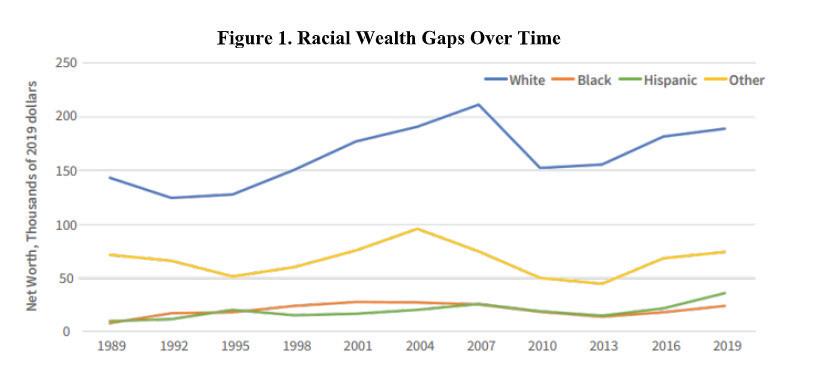
ese numbers speak to the notion of generational wealth. Generational wealth is anything of nancial value that is passed from one generation to another — including money, property, investments, valuable heirlooms or businesses.
“ ink about the wealth that was created during (the ‘40s and ‘50s) that White families have been able to leverage generation after generation, either to send their kids to college, to be able to start a business, to writing a check for their loved ones to be able to have money for (a) down payment in order to buy their own home and continue that generational wealth transfer,” said Aisha Weeks, managing director at the Dear eld
at’s in terms of age, ethnicity and race, and income, Freemark added.

In the future, some suburbs will likely undergo a “steady transformation” toward increased mobility, such as having more public transportation, Freemark said. Other changes could include more e orts to get people walking and biking, with the transition of suburban storefronts and strip malls into more walkable neighborhoods, he added. e path forward for the suburbs may involve a continued increase in diversity of residents, Freemark said. But that depends on whether states and the federal government will expand support and requirements related to a ordable housing, Freemark said.
“We’re going to need signi cant public investment and changes to public law to support those outcomes,” Freemark said. “Otherwise, little is going to change.” e a ordability issue transcends race, with many people simply priced out of the housing market and those who are in it struggling to a ord what they need for their families. In 2010, the median singlefamily home price in metro Denver was about $200,000. It was roughly triple that as of 2022.
Coupled with a ordability is an availability issue that local rules play a role in exacerbating. Large-lot zoning — planning for houses to be built on large portions of land — is one major issue. In other words, there are too many large homes be-
ing built and too few starter homes, leaving prospective rst-time homebuyers with few options, perhaps even relegated forever to renting.
“If you have a very expensive largelot neighborhood, you don’t get young families,” Rogers said. “You don’t want your community to box out young families or new Americans. Or, you end up with, in a sense, a retirement community, and there’s nothing wrong with a retirement community, but you don’t want your entire community (to be that). You want kids to be in your schools.” e long-term trend of rising housing prices plays a role, too, as wages fail to keep pace with housing costs. at “has the potential to continue to widen inequality and even perhaps embed it,” Rogers said.
tions with lenders, real estate paperwork and documents rarely come in languages other than English.
Over the last couple of years, Brandon Stepter, a community consultant, has been working in Broomeld. In an e ort to bring more people of color into the community, Stepter looks at housing infrastructure, housing practices and community practices.
Stepter and his wife, Gabrielle, both of whom are Black, have been renting in Aurora but have recently been looking to purchase a home.
Fund for Black Wealth, a Denver area group that emphasizes homeownership. “ at wasn’t available in mass for Black and African American families.”
A family’s primary residence is typically their most valuable asset, according to the National Association of Realtors.
It’s not just the monetary value of a house and property that adds to wealth. ere are tax bene ts for homeowners and people can borrow against a home’s equity to start a business or to help with unexpected bills. Homeownership also provides stable housing, which has been shown to positively impact health and educational achievement. ese factors can, in turn, improve a person’s economic prosperity.
e Dear eld Fund for Black Wealth o ers down-payment assistance loans with no interest and no monthly payments up to $40,000 or 15% of the purchase price for Black homebuyers.
“We acknowledge that there’s a generational wealth gap, and so Dear eld Fund is walking alongside our clients and borrowers to say, ‘We will provide that down-payment assistance,’’’ Weeks said. is program helped Wilson and his wife buy their home in Aurora.
In addition, the fund also o ers advice and education on how to build wealth.
“We know that there are so many pitfalls and just things that, as a community, we have not learned at the dinner table like our counterparts,” Weeks said. “ ere’s a lot of power in the knowledge information transfer that happens within other
communities that we need to make sure that families are understanding.”
at issue of being at the proverbial dinner table comes up a lot for communities of color. Without an example to follow, some rst-time homebuyers don’t know where to begin. According to Alma Vigil, a local loan o cer assistant, families who do not own homes often do not pass along information about how to own and maintain a home.
To address this challenge, the Colorado Housing and Finance Authority o ers homebuyer education programs to teach Coloradans nancial skills and the steps to homeownership. ese classes are o ered in English and Spanish in an e ort to remedy language barriers, which can add challenges for potential homebuyers who do not speak English.
“ ere’s very (few) Spanish speaking loan o cers,” said Vigil, who is Hispanic and speaks Spanish herself. “ ere are some that claim to speak Spanish, but they’re not very uent. So it becomes a huge problem, especially with lack of understanding.”
In order to close the gaps, some lenders across the metro Denver area provide services in Spanish. A list of Spanish-speaking lenders can be found on the Colorado Housing and Finance Authority’s website. e issue isn’t just one faced by Hispanic and Latino communities. A report by the National Coalition for Asian Paci c American Community Development found language barriers are also often a challenge for members of the Asian American community when pursuing homeownership. In addition to conversa-
“We thought we would be pretty solid in that regard and we both make a decent amount of money,” Stepter said. “We thought we would be able to start looking, even in this market, to try and nd an equitable home that ts our budget.”
Stepter, who also works as a healthcare administrator, and his wife, who works for a technology company, said they are trying to gure out how to pay o their student debt so they can get a home loan within the next couple of years.
“I think right now what we’re seeing is a lot of younger African Americans who are in copious amounts of student debt and that has been preventing them from owning a home,” Stepter said.
Debt-to-income ratio is often a signi cant barrier for Black people who are looking to buy a home because that number is assessed when underwriters are deciding whether or not to give a mortgage, according to Jice Johnson, founder of the Black Business Initiative.
e Black Business Initiative is a Denver-based organization that focuses on economic equity in the Black community.

“In America, you are encouraged to graduate high school and go to college,” Johnson said. “Typically speaking, because you don’t have access, when you go to college you’re not going to pay for college outright. Instead, you’re going to get a student loan … So it increases the debt side of your ratio by a lot, oftentimes preventing you from purchasing a home.”
Black college graduates tend to owe thousands of dollars more in student debt, on average, than their White peers. According to a 2016 report from the Brookings Institution, the amount can exceed $7,000 at the date of graduation.
Black and Hispanic workers also tend to be paid less than their White counterparts, according to many studies on the subject. In 2020, Black workers in Colorado earned 74% and Latino workers in Colorado earned 71% of the hourly earnings of White workers, according to numbers from the 2020 ve-year American Community Survey.
“So you go to school, you get the degree, which is what you’re supposed to do to get the high-paying job,” Johnson said. “Now you come out and you have debt and also your income isn’t as high as it should be. So, your entire debt-to-income ratio doesn’t allow for you to purchase a home.”
In a national statistical analysis of more than 2 million conventional mortgage applications for home purchases, a data-based news publication called e Markup found that lenders were 40% more likely to turn down Latino applicants for loans, 50% more likely to deny Asian/Paci c Islander applicants, 70% more likely to deny Native American applicants and 80% more likely to reject Black applicants compared with similar White applicants.
Even for families of color that may not struggle immediately with wealth and knowledge disparities, discrimination persists in the housing market. People of color are often treated di erently in appraisals, lending practices and neighborhood
options.
Stories about what that looks like in the Denver area abound. Johnson of the Black Business Initiative lived in Westminster before moving to Aurora. When she was staging her home to sell, her real estate agent gave her some advice.
“It was encouraged for me to make sure I had no family photos up,” she said.
Meanwhile, she visited homes for sale that had photos of White families.
Johnson said it was good business advice. Her Black Realtor, Delroy Gill, understood the landscape and was looking out for her.
“ at’s my Realtor trying to get me top dollar,” she said. “ e question is, why would (leaving) my photos prevent me from getting top dollar?”
Gill said the practice of taking down photos removes potential hurdles that could occur for his clients. For Black clients, race is sadly one of those hurdles that could a ect how appraisers, inspectors and potential homebuyers view the home, he said.
“We do know racism is a real thing,” he said. “And it exists in every facet of life. So therefore, when you are faced with the unknown, it’s better to make the adjustments based on how society is versus taking the risk of creating more damage on Black wealth by them receiving less funds for their homes.”
e advice Gill gave Johnson was not unique. Paige Omohundro, business development manager at the Colorado Housing and Finance Authority said her team heard similar stories in recent focus groups with real estate agents, nonpro ts, lenders, housing advocates and people
trying to achieve homeownership in Black and African American communities. She said these stories were shared by members of Hispanic and Latino communities as well.
Gill said that because of his precautions, discrimination rarely impacts his clients’ sales. One time, however, the preparation was not enough.
A couple of years ago, Gill was working with an interracial couple to sell their home in Parker. When the appraiser arrived, the Black husband was leaving the property.

“I own investment properties in the area, so I know the area very well,” Gill said. “And I used to live in the neighborhood. So the value that we gave to the house was very appropriate — and the appraisal came in $100,000 less (than our value).”
According to Gill, the buyers, who were White, decided to pay the extra $100,000 out of pocket because they knew the original asking price was fair.

“ e agent and the buyers thought that the price was reasonable and that the appraiser made a big mistake,” Gill said. “We tried to dispute the appraisal and failed. He said he’s not going to change it.”
Gill said the homebuyers noted that the low appraisal was probably due to racial discrimination.

According to a 2021 study by Freddie Mac, a government-sponsored mortgage-buying company, this experience was not rare. Black and Latino mortgage applicants get lower appraisal values than the contract price more often than White applicants, according to the study. e study found that, based on over 12 million appraisals from Jan. 1, 2016 to Dec. 31, 2020, 8.6% of Black applicants receive an appraisal value lower than contract price, compared to 6.5% of White applicants. In the study, Freddie Mac said it would be valuable to conduct further research to understand why this gap exists.
In a report by the National Fair Housing Alliance, however, personal stories like that of Gill’s clients make the case that the appraisal gap comes from racial or ethnic discrimination.
One of these stories, originally reported by the Washington Post, was about a mixed-race couple in Denver. An appraiser greeted by the White wife valued the house at $550,000, whereas one greeted by the Black husband valued it at $405,000. e lower value appraisal report explicitly compared the home to others in a nearby predominantly Black neighborhood, even though that’s not where the house was located.
Since 1968, housing discrimination based on race has been illegal under the Fair Housing Act. Nine years before that federal law was signed, Colorado was the rst state to pass its own fair housing laws, according to the Colorado Housing and Finance Authority.
Although it is illegal, discrimination in housing based on race or color still happens, according to the Department of Justice. e department has led cases related to lending discrimination, including a 2012 Wells Fargo case in which the bank was forced to pay a settlement for its pattern of discrimination against quali ed Black and African American and Hispanic and Latino borrowers.
ere are e orts to change the process. According to the Urban Institute, a nonpro t research organization, 89% of all property appraisers and assessors are White while only 2 percent are Black and 5 percent are Hispanic. Addressing the lack of diversity in the profession could improve outcomes for Black and Hispanic communities, the organization said.
e Appraiser Diversity Initiative, a program led by mortgage-buying companies Fannie Mae and Freddie Mac and civil rights organization the National Urban League, is teaching new potential appraisers with a diversity of identities in an e ort to close this gap.
Approaching inclusion in real estate from a wider perspective, a program through the Urban Land Institute Colorado works to train women and people of color in development. is program, called the Real Estate Diversity Initiative, aims to create urban landscapes that serve diverse communities.
“I think trust in community-building is key,” Executive Director Rodney Milton said. “When developers build projects, they need community support because they’re shaping the community. And who better to be equipped to strengthen a community, to build it out, to revitalize it, then the folks who are from that community?”
Housing is a source of discrimination complaints. e Colorado Civil Rights Commission Annual report found that 14% of complaints were claims about housing issues.
Chantal Sundberg, a Black Realtor who works in the metro Denver area, said she has not witnessed or experienced discrimination in her work with her clients, most of whom are Black.
“Everyone is treated equal, whether it’s borrowing or buying homes,” she said.




Sundberg witnessed the 1994 Rwandan genocide, when hundreds of thousands of members of a minority ethnic group called the Tutsi were murdered by members of the Hutu ethnic majority. In her eyes, although it might be important to talk about topics of racial discrimination, focusing on them too much can have unintended consequences.
“When we emphasize them so much, it creates more division rather than unity,” she said.

Still, discrimination is an ongoing concern for the National Association of Realtors and Brokers. Sundberg said Realtors are trained to address discrimination issues.
And to Gill, the Realtor who helped Johnson sell her home, the association’s training is not enough to help all real estate agents.
“Race is a part of it, but it’s not the in-depth, you know, ‘how to understand if you’re being a racist or not,’” he said.
To address such concerns, the association released an immersive online simulation in 2020 that aims to train agents to recognize and avoid acting on their own biases. e program is part of the association’s Fair Housing Act Plan, which leaders created to emphasize accountability and culture change. e training is meant to make housing more accessible and a ordable to



















































































Junior-senior mates combine for 46 points in Jaguars win
coach Kent Grams said of why his squad is executing at such a high level so far this season. “ at’s what I think our team is very good at — we’re unsel sh and we play together as a team. It might be your night one night, but it’s going to be someone else’s night the next.”
Against Douglas County, it was Hershberger and Terry’s night.
At one point early in the second quarter, Hershberger
netted a trio of 3-pointers over a span of 1 minute, 29 seconds to give Rock Canyon (14-1, 2-0) a 32-22 lead.
at was the moment in the game when the Jaguars really started to catch re and take control.
In the closing minutes of the previous quarter, Terry connected on three triples over a 3:04 span. His trey at the buzzer, which made the
score 19-18 in Rock Canyon’s favor, gave his team the lead for good.
When the dust had settled on the hyperpaced, pointsthick contest, Terry and Hershberger had combined for nine 3-pointers — ve from Terry and four from Hershberger.
“My team found me when I was open,” said Hershberger, who will take his talents

to Upper Iowa University, the state’s only Division II university, next season. “It’s not just me making shots, it’s them nding me when I’m open. It’s a team e ort.”
Added Terry: “ ese guys set me up tonight. I couldn’t do it without them. We love to make plays for each other. ‘We over me.’ at’s what we always say.”
Grams’ “be unsel sh and
play together” message is clearly getting through to his players.
While Hershberger and Terry were the headliners, senior Aidan Peck also did plenty of damage against Douglas County (6-8, 0-1). e 6-foot-7 guard’s dunk midway through the third quarter extended the Jaguars’ lead to 56-39. en, with the game already in hand for Rock Canyon late in the fourth quarter, Peck put an exclamation point on the win with another slam.

Peck nished with 17 points — 13 of his points came in the second half — for the Jaguars.
“We like to work together,” Grams said. “We’re doing a good job of sharing the ball and making the right reads to put people in the right spots to be able to make plays.”
e Huskies weren’t without their bright spots. ey came into the night averaging 59 points a game, but thanks in large part to Anthony Nettles’ 26 points and Xander Baldessari’s 19, they bested their game average by 11 points. Gavin Dale scored six points for Douglas County, London Moore added ve, and Roman Saiz and Andrew Horwith each had four.
For Rock Canyon, Reid Finch scored six points, Hudson Ellwood and Kasen Lehman each had ve, and Nolan Kliewer had four.
Cherry Creek hockey coach Je Mielnicki feels he has a team that can compete with other top Colorado Class 5A squads this season.
e Bruins, a co-op team with players attending Creek, Cherokee Trail, Grandview, Eaglecrest and Overland, defeated Fort Collins 4-3 on Jan. 21 in a Metro League game played at Family Sports Arena.
So far this season, it appears Valor Christian, Regis Jesuit, Monarch, Chaparral, defending state champion Denver East, Ralston Valley and Creek are the state’s top 5A teams.
“We match up with every
team,” said Mielnicki. “Each team has plus or minus 10%. I don’t see one team just steamrolling.
“Valor beats Monarch in overtime, Ralston Valley beat Valor early in the season, Monarch and Ralston Valley tie, we split with Ralston Valley. So you’ve seen a lot more of these type games. All the teams are going to be prepared for the playo s because they are playing meaningful, close games.”
Against Fort Collins, Creek took a 2-0 lead after the rst period with Dominic Suchkov, a junior who attends Cherry Creek, scoring both goals.
Fort Collins rallied and tied the game at 2-2 with a power play goal in the third period but Creek responded with two goals in a fourminute span.
Jackson O’Brien, a senior from Cherokee Trail, scored from the top of the right faceo circle and then Grand-
view junior William O’Grady made it 4-2 with a goal that o set a late Fort Collins goal.
“We did not have a good game (Jan. 20) against Ralston Valley (7-0 loss) but the lesson is ‘what are we going to do today,’” Mielnicki added. He said his team showed up almost two hours before the game to warm up: “ ey were focused and ready to go.
“ e sign of a good team, when you give up a two-goal lead, usually it becomes a one-goal de cit, and we found a way to get right back on top. We have been ranked anywhere from one to three. We’re 7-3 and playing well.”
Cherry Creek improved to 4-3 in the Metro Conference and played without starting goalie Ethan Barnard, who is sidelined with an injury. Mason Banks, a freshman from Cherry Creek High School, started for the Bruins.

“We started a freshman goalie, his rst start ever,”
explained Mielnicki. “Our senior goalie got injured. He’s going to be out for weeks. Mason Banks played really well considering it was a tight game and we needed the points. e young goalie got our hard hat award, which goes to the hardest worker.”
Fort Collins, another coop team that draws players from Fossil Ridge, Rocky Mountain, Fort Collins, Mountain View, Windsor, Loveland, Poudre, Berthoud, Roosevelt, Timnath and Severence high schools, is now 1-9 overall and 0-8 in the league.
 BY JIM BENTON SPECIAL TO COLORADO COMMUNITY MEDIA
BY JIM BENTON SPECIAL TO COLORADO COMMUNITY MEDIA
Mac Terry stepped back and won a boys basketball game for Rock Canyon.

Terry made a fall-away shot from inside the 3-point line to beat the buzzer and Regis Jesuit 59-57 in a Continental League game on Jan 20.


e game featured Rock Canyon, ranked third in the CHSAANow.com poll, against No. 8 Regis and drew a capacity crowd to the Guy Gibbs gym on the Regis campus. e outcome wasn’t decided until the nal seconds.

With the score tied at 57, there were two turnovers on charging calls in the 28 seconds, one on the Jaguars and one on Regis with 4.3 seconds remaining in regulation time.



Rock Canyon inbounded the ball, which ended up in Terry’s hands. He ended the game and sent Jaguar students racing onto the court.
“It was an amazing game and to make that shot in front of these amazing fans was great,” said Terry. “I wouldn’t say we practice that shot. I just stepped back, good luck, and I knocked it down.
“I was at the top of the rim, got cut o and just stepped back.”



Terry’s shot extended Rock Canyon’s winning streak to 13 straight and improved the Jaguars (15-1) record to 3-0 in the league. Regis is now 10-5 and 2-1.
Rock Canyon coach Kent Grams had a lot of options and not much time to set up a play for the nal shot.
“ ere’s a lot of guys you have to guard and pay attention to on our team,” said Grams. “Obviously Gavin (Hershberger) is probably the key, the guy that everybody is zeroing in on.
“Mac is strong and makes really good decisions and he has good touch. Gavin and all of our guys play one-on-one after practice and they always talk about how good Mac is on one-on-one situations. We put the ball in his hands and he made a heck of a shot.”
in the third quarter and led by nine points to start the fourth but the Raiders rallied.
are never going to go away,” said Grams. “Coach Shaw (Ken) does a great job of preparing them they are so disciplined. If you miss shots they are going to score at the other end. It was going to be a battle. ey never
go away. I’m proud of our guys.”


Aiden Peck, a 6-foot-7 senior, paced the Jaguars with 18 points and eight came in the second half. Peck also had six rebounds, four assists and ve blocked shots.
Terry, the 6-3 junior, nished with 15 points and left people talking about his nal second shot. Hershberger had 13 points.
Senior Tarea Fulcher of Regis took

game scoring honors with 20 points. However, he missed a free throw to complete a three-point play, which would have given the Raiders a onepoint lead with 28.8 seconds to play.
“ is win will de nitely help us,” said Terry. “We got the experience of being in this atmosphere with a big crowd, how to communicate and talk to each other more. Doing that will prepare us for the playo s.”




Colorado Community Media welcomes letters to the editor. Please note the following rules:
• Email your letter to letters@coloradocommunitymedia.com. Do not send via postal mail. Put the words “letter to the editor” in the email subject line.
















• Submit your letter by 5 p.m. on Wednesday in order to have it considered for publication in the following week’s newspaper.
• Letters must be no longer than 400 words.








• Letters should be exclusively submitted to Colorado Community Media and should not submitted to other outlets or previously posted on websites or social media. Submitted letters become the property of CCM and should not be republished elsewhere.













• Letters advocating for a political candidate should focus on that candidate’s qualifications for o ce. We cannot publish letters that contain unverified negative information about a candidate’s opponent. Letters advocating for or against a political candidate or ballot issue will not be published within 12 days of an election.


• Publication of any given letter is at our discretion. Letters are published as space is available.




















• We will edit letters for clarity, grammar, punctuation and length and write headlines (titles) for letters at our discretion.




























• Please don’t send us more than one letter per month. First priority for publication will be given to writers who have not submitted letters to us recently.



Class B CDL propane delivery truck driver for Spring Valley Gas, Elizabeth.
P/T & F/T positions; responsible for propane delivery and customer service.

HazMat/Tanker endorsement. Propane certification a plus. Insurance age requirement 26 with clean MVR. SVG is building a team, not just a job! Starting salary based on experience & qualifications. Call 303-660-8810.
No Sales, no Investment, No Risk, Free training, Free website. Contact Susan at 303-646-4171 or fill out form at www.wisechoice4u.com
This is a part-time position, up to 30 hours per week. This is a great opportunity to work into a full-time assistant manager position. Starting pay ranges from $25.00 and up per hour, commensurate with experience and training. Applicants are required to have good skills in computer data entry, ten key, and the ability to use Word and other standard Microsoft applications. Applicants must also have good customer service skills and the ability to handle payments in a secure and accurate manner.

CO)
Write SW in support of varied needs of large telecommunications co. Bachelor’s EE, Electronics and Communications Engineering or Computer Science. 5 yrs progressive IT exp, incl some solid exp in: Java; Spring; MSSql; Oracle; Gradle or Maven; Git; Jenkins; Restful API’s; Specflow or Camunda; Splunk; Angular; Agile meths; Java script; Intellij; Windows; MS Office; Linux. Salary $139,984 to $168,250/yr, DOE. PTO, medical/ dental/vision, 401K, contact employer for addl benefit info. MUST follow these specific application instructions: Send CV and cvr ltr to HRrecruitment@lumen.com or Kaitlyn Marrero, Qwest Corporation d/b/a CenturyLink QC, 931 14th Street, Floor 9, Denver, CO 80202 within 30 days Re job #W2021-534
Are you a CARING, COMPASSIONATE, NURTURING person who enjoys helping others and making a difference in people’s lives?
If so, we are NOW contracting with Host Home Providers.
Diagnose & treat equine that have emergency medical & surgical needs: perform physical exams, collect samples for lab tests & analysis, & triage & treat emergencies; perform medical & surgical procedures to treat sick or injured animals; review patient medical records & explain findings to clients & referring veterinarians; & consult with owners & other veterinary specialists on emergency basis. Req. a Doctor of Veterinary Medicine (DVM) degree (will accept a U.S. degree or a foreign degree evaluated to be equivalent to a U.S. Doctor of Veterinary Medicine degree by a qualified credential evaluation service), plus at least 48 months of training (specifically, 36 months (3 years) of residency training in large animal internal medicine (i.e., completion of an American Veterinary Medical Association (AVMA)-accredited residency in large animal internal medicine), plus 12 months (1 year) of residency training in emergency & critical care (ECC) under an American College of Veterinary Emergency Critical Care (ACVECC)accredited residency program). Must be board certified in Large Animal Internal Medicine by the American College of Veterinary Internal Medicine (ACVIM); must be licensed as a veterinarian or otherwise eligible to perform veterinary medicine in the State of Colorado in accordance with rules of the Colorado State Board of Veterinary Medicine. Offered Wage (Annual Salary): $130,000/year (The employer will pay or exceed the prevailing wage, as determined by the U.S. Department of Labor). Along with the Offered Wage (Annual Salary), discretionary compensation and benefits include emergency and consultation fees, time off, and sick leave under the Colorado HFWA, PHE and employment benefits including medical, dental, vision, LTD, professional liability, professional license, membership dues, continuing education and retirement. Geographic area of employment (worksite): Littleton, CO (Denver, CO metropolitan area). Address of worksite (place of employment) is 8025 South Santa Fe Drive, Littleton, CO 80120. Send resume or report to: Littleton Large Animal Clinic, PC (Attention: Dawn Ermish), 8025 South Santa Fe Drive, Littleton, CO 80120, or fax to 303-794-9466 or email to dermish@ littletonequine.com.
Applicant must be bondable and qualified to receive Notary Public status in the State of Colorado. Please submit an application along with your resume for consideration. Resumes without a completed application will not be accepted. Submit your documents to Diana Miller, District Manager at dmiller_ ppwsd@comcast.net. You can also mail your documents to Perry Park Water and Sanitation District, 5676 Red Rock Drive, Larkspur, CO 80118. You can download an application and view the job description by visiting our website at www.ppwsd.org. Perry Park Water and Sanitation District is an Equal Opportunity Employer.
Titan Concrete, Inc. nA flatwork construction company in Sedalia, Co has an opening in Bookkeeping - Quickbooks - Accounts Payable, Accounts Receivable. Weekly Payroll - 25 employees. Handle day to day office business. $25.00 per hour. Part time - 20-30 hours a week - Flexible Not Remote.
Email resume to: Augie@titanconcreteinc.com
Lead SW Developer (Littleton, CO)







Host home’s make a lifestyle commitment to an individual with developmental or intellectual disabilities by giving the option of choosing to live in a family home and make it theirs as well.
Host Home Providers are compensated a tax-exempt stipend $1200-$3000 a month depending on level of need plus room and board for providing supports and a caring home. If you are interested in more information about becoming a Host Home Provider, please e-mail your resume to srockman@integratingsuppports.com or call 719-313-0626.
Translate business reqts into IT solutions, lead team effort to dsgn, devel, code, test, debug new & existing SW. BS CS or closely related, 5 yrs progressive IT exp, including some solid exp in: Salesforce CRM apps devel; Data Model; Data Security; Workflow Approvals; Process Builder; Flows; Report & Dashboards; Apex Triggers, Apex Controllers; Asynchronous Apex; Rest APIs; Force.com APIs; Visualforce Pages; Aura framework; LWC framework; Lightning Design System; Vlocity Build Tool; SFDX CLI; Vlocity EPC/ CPQ; Vlocity Omniscripts; Vlocity DataRaptors; Vlocity Integration Procedures; Vlocity DX Tool; External Objects; Data Loader. Salary 139,984 to 197,188/yr, DOE. PTO, medical/dental/vision, 401K, contact employer for addl benefit info. MUST follow these specific application instructions: Send CV, cvr ltr to HRrecruitment@lumen. com or Kaitlyn Marrero, Lumen Technologies Service Group, LLC, 931 14th Street, Floor 9, Denver, CO 80202 within 30 days re Job #W2021-426.

Classifieds
2 bicycles, single bed complete never used, wheelchair, new poker table and shop vacuum. All for $500 or best offer. Will sell single items as well. Call 720-465-9022
WIDOWED MEN AND WOMEN OF AMERICA. A social club offering many exciting activities and life long friendships. Social hours for all areas of Metro Denver. Visit Widowedamerica.org for details In your area!

DENTAL INSURANCE -


Physicians Mutual Insurance Company. Covers 350 procedures. Real insurancenot a discount plan. Get your free dental info kit! 1-855-526-1060 www.dental50plus.com/58 #6258.
VIAGRA and CIALIS USERS!
50 Generic Pills SPECIAL $99.00 100% guaranteed. 24/7 CALL NOW! 888-445-5928 Hablamos Espanol Medical
Attention oxygen therapy users!
Inogen One G4 is capable of full 24/7 oxygen delivery. Only 2.8 pounds. Free info kit. Call 877-929-9587
DISH TV $64.99 190 Channels + $14.95 High Speed Internet. Free Installation, Smart HD DVR included, Free Voice remote. Some Restrictions apply. Promo Expires 1/21/23. 1-866-479-1516.
Prepare for power outages today with a GENERAC home standby generator $0 Down + Low Monthly Pmt Request a free Quote. Call before the next power outage: 1-855-948-6176
Attention Homeowners! If you have water damage and need cleanup services, call us! We’ll get in & work with your insurance agency to get your home repaired and your life back to normal ASAP! 855-7677031
!!OLD GUITARS WANTED!! GIBSON, FENDER, MARTIN, etc. 1930’s to 1980’s. TOP DOLLAR PAID.
CALL TOLL FREE 1-866-433-8277
The Generac PWRcell solar plus battery storage system. Save money, reduce reliance on grid, prepare for outages & power your home. Full installation services. $0 down financing option. Request free no obligation quote. 1-877-539-0299
Free high speed internet if qualified. Govt. pgm for recipients of select pgms incl. Medicaid, SNAP, Housing Assistance, WIC, Veterans Pension, Survivor Benefits, Lifeline, Tribal. 15 GB internet. Android tablet free w/one-time $20 copay. Free shipping. Call Maxsip Telecom! 1-833-758-3892
Become a published author. We want to read your book! Dorrance Publishing trusted since 1920. Consultation, production, promotion & distribution. Call for free author`s guide 1-877-729-4998 or visit dorranceinfo.com/ads
Donate Your Car to Veterans Today! Help and Support our Veterans. Fast - FREE pick up. 100% tax deductible. Call 1-800245-0398
HughesNet– Finally, super-fast internet no matter where you live. 25 Mbps just $59.99/mo! Unlimited Data is Here. Stream Video. Bundle TV & Internet. Free Installation. Call 866-499-0141
Switch and save up to $250/yr on talk, text & data. No contract or hidden fees. Unlimited talk & text with flexible data plans. Premium nationwide coverage. 100% U.S. based customer service. Limited time get $50 off any new account. Use code GIFT50. 1-855-903-3048
Caring for an aging loved one? Wondering about options like seniorliving communities and in-home care? Caring.com’s Family Advisors help take the guesswork out of senior care for your family. Free, noobligation consult: 1-855-759-1407
Scrap Metal, Batteries, Appliances, Wiring, Scrap Plumbing/Heating, Cars/Parts, Clean out Garages/Yards, Rake, Yard work done w/chainsaw, Certified Auto Mechanical / Body Work & paint available Also can do inside or outside cleaning 303-647-2475 / 720-323-2173

Eliminate gutter cleaning forever! LeafFilter, the most advanced debrisblocking gutter protection. Schedule free LeafFilter estimate today. 20% off Entire Purchase. 10% Senior & Military Discounts. Call 1-833-6101936
Safe Step. North America’s #1 Walk-in tub. Comprehensive lifetime warranty. Top-of-the-line installation and service. Now featuring our free shower package & $1600 off - limited time! Financing available. 1-855-4171306
MobileHelp, America’s premier mobile medical alert system. Whether you’re home or away. For safety & peace of mind. No long term contracts! Free brochure! 1-888489-3936
BATH & SHOWER UPDATES in as little as ONE DAY! Affordable prices - No payments for 18 months! Lifetime warranty & professional installs. Senior & Military Discounts available. Call: 855-761-1725
SERVICE DIRECTORY ADS Contact Erin, 303-566-4074 eaddenbrooke@coloradocommunitymedia.com


CLASSIFIED LINE ADS: MONDAY, 5 P.M. SERVICE DIRECTORY: THURSDAY, 5 P.M. LEGALS: THURSDAY, 3 P.M.




































































































Public Trustee Sale No. 2022-0169
To Whom It May Concern: On 11/4/2022 3:27:00
PM the undersigned Public Trustee caused the Notice of Election and Demand relating to the Deed of Trust described below to be recorded in Douglas County.
Original Grantor: Terrence Neff
Original Beneficiary: Mortgage Electronic Registration Systems, Inc. ("MERS") as nominee for First California Mortgage Company, Its Successors and Assigns
Current Holder of Evidence of Debt: Caliber Home Loans, Inc.
Date of Deed of Trust (DOT): 2/22/2013
Recording Date of DOT: 2/28/2013
Reception No. of DOT: 2013017169
DOT Recorded in Douglas County.
Original Principal Amount of Evidence of Debt: $168,750.00
Outstanding Principal Amount as of the date hereof: $133,256.90
Pursuant to C.R.S. §38-38-101 (4) (i), you are hereby notified that the covenants of the deed of trust have been violated as follows: the failure to make timely payments required under said Deed of Trust and the Evidence of Debt secured thereby.
THE LIEN FORECLOSED MAY NOT BE A FIRST LIEN.
The property described herein is all of the property encumbered by the lien of the deed of trust.
Legal Description of Real Property: LOT 12, BLOCK 2, PULTE HOMES AT ROXBOROUGH VILLAGE FILING NO. 3, COUNTY OF DOUGLAS, STATE OF COLORADO.
Which has the address of: 9678 Fairwood Street, Littleton, CO 80125
The current holder of the Evidence of Debt secured by the Deed of Trust described herein, has filed written election and demand for sale as provided by law and in said Deed of Trust.
THEREFORE, Notice Is Hereby Given that on the first possible sale date (unless the sale is continued*) at 10:00 a.m. Wednesday, February 22, 2023, at the Public Trustee’s office, Philip S Miller Building Hearing Room, 100 Third Street, Castle Rock, Colorado, I will sell at public auction to the highest and best bidder for cash, the said real property and all interest of said Grantor(s), Grantor(s)’ heirs and assigns therein, for the purpose of paying the indebtedness provided in said Evidence of Debt secured by the Deed of Trust, plus attorneys’ fees, the expenses of sale and other items allowed by law, and will deliver to the purchaser a Certificate of Purchase, all as provided by law. If the sale date is continued to a later date, the deadline to file a notice of intent to cure by those parties entitled to cure may also be extended.
First Publication: 12/29/2022
Last Publication: 1/26/2023
Publisher: Douglas County News Press
Dated: 11/7/2022
DAVID GILL DOUGLAS COUNTY Public TrusteeThe name, address and telephone numbers of the attorney(s) representing the legal holder of the indebtedness is:
ILENE DELL'ACQUAColorado Registration #: 31755
7700 E. ARAPAHOE ROAD, SUITE 230 , CENTENNIAL, COLORADO 80112
Phone #: (877) 369-6122
Fax #: Attorney File #: CO-22-947393-LL
*YOU MAY TRACK FORECLOSURE SALE
DATES on the Public Trustee website: https:// www.douglas.co.us/public-trustee/
Legal Notice No. 2022-0169
First Publication: 12/29/2022
Last Publication: 1/26/2023
Publisher: Douglas County News Press
Littleton
NOTICE OF SALE
Public Trustee Sale No. 2022-0184
To Whom It May Concern: On 12/2/2022 12:26:00
PM the undersigned Public Trustee caused the Notice of Election and Demand relating to the Deed of Trust described below to be recorded in Douglas County.
Original Grantor: SEAN D. FEY
AND ELIZABETH A. DURBIN
Original Beneficiary: COLORADO BUSINESS BANK
Current Holder of Evidence of Debt: BOKF, N.A. Date of Deed of Trust (DOT): 11/21/2016
Recording Date of DOT: 11/21/2016
Reception No. of DOT: 2016084283
DOT Recorded in Douglas County.
Original Principal Amount of Evidence of Debt: $2,862,000.00
Outstanding Principal Amount as of the date hereof: $2,614,034.88
Pursuant to C.R.S. §38-38-101 (4) (i), you are hereby notified that the covenants of the deed of trust have been violated as follows: Failure to pay principal and interest when due together with all other payments provided for in the Evidence of Debt secured by the Deed of Trust and other violations of the terms thereof.
THE LIEN FORECLOSED MAY NOT BE A FIRST LIEN.
The property described herein is all of the property encumbered by the lien of the deed of trust.
Legal Description of Real Property: THE NORTHWEST 1/4 OF THE NORTHEAST 1/4 OF SECTION 25, TOWNSHIP 7 SOUTH, RANGE 69 WEST OF THE 6TH PRINCIPAL MERIDIAN, COUNTY OF DOUGLAS, STATE OF COLORADO. EXCEPTING THEREFROM PROPERTY CONVEYED IN DEED RECORDED JULY 29, 1987 IN BOOK 737 AT PAGE 596 OF THE DOUGLAS COUNTY, COLORADO RECORDS Which has the address of: 3755 North Rampart Range Road Two ParcelsR0477486 And R0481068 , Littleton, CO 80125
The current holder of the Evidence of Debt secured by the Deed of Trust described herein, has filed written election and demand for sale as provided by law and in said Deed of Trust.
THEREFORE, Notice Is Hereby Given that on the first possible sale date (unless the sale is continued*) at 10:00 a.m. Wednesday, March 22, 2023, at the Public Trustee’s office, Philip S Miller Building Hearing Room, 100 Third Street, Castle Rock, Colorado, I will sell at public auction to the highest and best bidder for cash, the said real property and all interest of said Grantor(s), Grantor(s)’ heirs and assigns therein, for the purpose of paying the indebtedness provided in said Evidence of Debt secured by the Deed of Trust, plus attorneys’ fees, the expenses of sale and other items allowed by law, and will deliver to the purchaser a Certificate of Purchase, all as provided by law. If the sale date is continued to a later date, the deadline to file a notice of intent to cure by those parties entitled to cure may also
be extended.
First Publication: 1/26/2023
Last Publication: 2/23/2023
Publisher: Douglas County News Press Dated: 12/2/2022
DAVID GILL DOUGLAS COUNTY Public Trustee
The name, address and telephone numbers of the attorney(s) representing the legal holder of the indebtedness is:
JENNIFER C. ROGERS
Colorado Registration #: 34682 4530 S. Eastern Ave., Ste. 10 , LAS VEGAS, NEVADA 89119 Phone #: 877-353-2146
Fax #: Attorney File #: 48058752
*YOU MAY TRACK FORECLOSURE SALE
DATES on the Public Trustee website: https:// www.douglas.co.us/public-trustee/
Legal Notice No. 2022-0184
First Publication: 1/26/2023
Last Publication: 2/23/2023
Publisher: Douglas County News Press
PUBLIC NOTICE
Littleton
Public Trustee Sale No. 2022-0177
To Whom It May Concern: On 11/23/2022 12:59:00 PM the undersigned Public Trustee caused the Notice of Election and Demand relating to the Deed of Trust described below to be recorded in Douglas County.
Original Grantor: OVIDIO ENRIQUE PEREZ II AND SARAH A PEREZ
Original Beneficiary: MORTGAGE ELECTRONIC REGISTRATION SYSTEMS, INC. ACTING SOLELY AS NOMINEE FOR FFC MORTGAGE CORP.
Current Holder of Evidence of Debt: NATIONSTAR MORTGAGE LLC Date of Deed of Trust (DOT): 4/15/2016
Recording Date of DOT: 5/17/2016
Reception No. of DOT: 2016030880
DOT Recorded in Douglas County.
Original Principal Amount of Evidence of Debt: $255,852.00 Outstanding Principal Amount as of the date hereof: $288,318.12
Pursuant to C.R.S. §38-38-101 (4) (i), you are hereby notified that the covenants of the deed of trust have been violated as follows: Failure to pay principal and interest when due together with all other payments provided for in the Evidence of Debt secured by the Deed of Trust and other violations of the terms thereof.
THE LIEN FORECLOSED MAY NOT BE A FIRST LIEN.
The property described herein is all of the property encumbered by the lien of the deed of trust.
Legal Description of Real Property: LOT 69, HIGHLANDS RANCH FILING NO. 122L, COUNTY OF DOUGLAS, STATE OF COLORADO.
Which has the address of: 10647 Cherrybrook Cir, Littleton, CO 80126
The current holder of the Evidence of Debt secured by the Deed of Trust described herein, has filed written election and demand for sale as provided by law and in said Deed of Trust.
THEREFORE, Notice Is Hereby Given that on the first possible sale date (unless the sale is continued*) at 10:00 a.m. Wednesday, March 15, 2023, at the Public Trustee’s office, Philip S Miller Building Hearing Room, 100 Third Street, Castle Rock, Colorado, I will sell at public auction to the highest and best bidder for cash, the said
real property and all interest of said Grantor(s), Grantor(s)’ heirs and assigns therein, for the purpose of paying the indebtedness provided in said Evidence of Debt secured by the Deed of Trust, plus attorneys’ fees, the expenses of sale and other items allowed by law, and will deliver to the purchaser a Certificate of Purchase, all as provided by law. If the sale date is continued to a later date, the deadline to file a notice of intent to cure by those parties entitled to cure may also be extended.
First Publication: 1/19/2023
Last Publication: 2/16/2023
Publisher: Douglas County News Press Dated: 11/23/2022
DAVID GILL DOUGLAS COUNTY Public Trustee
The name, address and telephone numbers of the attorney(s) representing the legal holder of the indebtedness is:
RYAN BOURGEOIS
Colorado Registration #: 51088 1391 Speer Boulevard, Suite 700 , DENVER, COLORADO 80204
Phone #: (303) 350-3711
Fax #: Attorney File #: 00000009654658
*YOU MAY TRACK FORECLOSURE SALE DATES on the Public Trustee website: https:// www.douglas.co.us/public-trustee/ Legal Notice No. 2022-0177
First Publication: 1/19/2023
Last Publication: 2/16/2023
Publisher: Douglas County News Press
The current holder of the Evidence of Debt secured by the Deed of Trust described herein, has filed written election and demand for sale as provided by law and in said Deed of Trust.
THEREFORE, Notice Is Hereby Given that on the first possible sale date (unless the sale is continued*) at 10:00 a.m. Wednesday, March 8, 2023, at the Public Trustee’s office, Philip S Miller Building Hearing Room, 100 Third Street, Castle Rock, Colorado, I will sell at public auction to the highest and best bidder for cash, the said real property and all interest of said Grantor(s), Grantor(s)’ heirs and assigns therein, for the purpose of paying the indebtedness provided in said Evidence of Debt secured by the Deed of Trust, plus attorneys’ fees, the expenses of sale and other items allowed by law, and will deliver to the purchaser a Certificate of Purchase, all as provided by law. If the sale date is continued to a later date, the deadline to file a notice of intent to cure by those parties entitled to cure may also be extended.
First Publication: 1/12/2023
Last Publication: 2/9/2023
Publisher: Douglas County News Press
Dated: 11/15/2022
DAVID GILL
DOUGLAS COUNTY Public Trustee
The name, address and telephone numbers of the attorney(s) representing the legal holder of the indebtedness is:
ALISON L. BERRY
Colorado Registration #: 34531 9800 S. MERIDIAN BLVD. SUITE 400, ENGLEWOOD, COLORADO 80112
Phone #: (303) 706-9990
Fax #: (303) 706-9994
SUNSTATEEQUIPMENTCOMPANYLLC
SURBECK,JON
TABOR,
TAILOR
TAPPAN,
Highlands
Public Trustee Sale No. 2022-0173
To Whom It May Concern: On 11/14/2022 4:52:00
PM the undersigned Public Trustee caused the Notice of Election and Demand relating to the Deed of Trust described below to be recorded in Douglas County.
Original Grantor: LLOYD RUSTIN HIGBEE AND TIFFANY HIGGINS HIGBEE
Original Beneficiary: WELLS FARGO BANK, N.A. Current Holder of Evidence of Debt: WELLS FARGO BANK, N.A.
Date of Deed of Trust (DOT): 9/25/2007
Recording Date of DOT: 10/19/2007
Reception No. of DOT: 2007082008
DOT Recorded in Douglas County.
Original Principal Amount of Evidence of Debt: $75,000.00
Outstanding Principal Amount as of the date hereof: $73,054.86
Pursuant to C.R.S. §38-38-101 (4) (i), you are hereby notified that the covenants of the deed of trust have been violated as follows: Borrower's failure to make timely payments as required under the Evidence of Debt and Deed of Trust.
THE LIEN FORECLOSED MAY NOT BE A FIRST LIEN.
The property described herein is all of the property encumbered by the lien of the deed of trust.
Legal Description of Real Property: LOT 207, HIGHLANDS RANCH, FILING NO. 112-A, COUNTY OF DOUGLAS, STATE OF COLORADO.
Which has the address of: 9307 Desert Willow Trl, Highlands Ranch, CO 80129
The Deed of Trust was modified by a document recorded in Douglas County on 11/8/2022, Reception number 2022071539. Reason modified and any other modifications: Legal Description.
WENGER,
Attorney File #: 22-028369
*YOU MAY TRACK FORECLOSURE SALE DATES on the Public Trustee website: https:// www.douglas.co.us/public-trustee/
Legal Notice No. 2022-0173
First Publication: 1/12/2023
Last Publication: 2/9/2023
Publisher: Douglas County News Press
Highlands Ranch NOTICE OF SALE Public Trustee Sale No. 2022-0182
To Whom It May Concern: On 11/29/2022 11:28:00 AM the undersigned Public Trustee caused the Notice of Election and Demand relating to the Deed of Trust described below to be recorded in Douglas County.
Original Grantor: CYNTHIA WIEST
Original Beneficiary: MORTGAGE ELECTRONIC REGISTRATION SYSTEMS, INC. AS NOMINEE FOR R M K FINANCIAL CORP. D/B/A MAJESTIC HOME LOAN, ITS SUCCESSORS AND ASSIGNS
Current Holder of Evidence of Debt: THE MONEY SOURCE INC.
Date of Deed of Trust (DOT): 6/23/2014
Recording Date of DOT: 8/4/2014
Reception No. of DOT: 2014043599
DOT Recorded in Douglas County.
Original Principal Amount of Evidence of Debt: $332,352.00
Outstanding Principal Amount as of the date hereof: $280,992.06
Pursuant to C.R.S. §38-38-101 (4) (i), you are hereby notified that the covenants of the deed of trust have been violated as follows: Borrower's failure to make timely payments as required under the Evidence of Debt and Deed of Trust.
THE LIEN FORECLOSED MAY NOT BE A FIRST LIEN.
The property described herein is all of the property encumbered by the lien of the deed of trust.
WESIERSKI, BRIDGET E 801.18 Election Judges/Referee Fees
WESIERSKI, WALTER P 804.06 Election Judges/Referee Fees
WESTSIDE TOWING INC 9,916.06 Vehicle Tow Services
WHEELER-CLOUSE, SAMMYE 2,313.68 Election Judges/Referee Fees
WHITE, CARLA M 412.00 Election Judges/Referee Fees
WHITE, DONNA KATHLEEN 1,922.99 Election Judges/Referee Fees
WICK, DONALD 504.00 Election Judges/Referee Fees
WILDCAT SHOPPING CENTER LLC 134,912.50 Building/Land Lease/Rent
WILLIAMS, JERI 234.72 Election Judges/Referee Fees
WILLIAMS, ROBLYN 1,980.45 Election Judges/Referee Fees
WILSON & COMPANY INC 3,527.28 Professional Services
WILSON, LARRY 33.51 Fee Refunds - Clerk & Recorder
WILSON, LINDA LENORE 577.44 Election Judges/Referee Fees
WIZ-QUIZ LAKEWOOD 35.00 Purchased Services
WOOLDRIDGE, JAMIE 106.72 Election Judges/Referee Fees
WREN, JAY ROBIN 245.28 Election Judges/Referee Fees
WRIGHT, JOHN 1,990.62 Election Judges/Referee Fees
WSP USA INC 7,817.25 Professional Services
XCEL
XEROXFINANCIALSERVICES 692.37 EquipmentRental
XPERIENCE
XUELI,
YELLURU,
YOKLEY,
YOKLEY,
YOKOYAMA,
YOUNG,
YOUNG,
YOUNG,
YOUNG,
ZIVARO
ZOETEWEY,
FROM PAGE 15
“ ere was this idea that you could have all of this,” Carlson said.
More Americans these days, she said, are de ning success on their own terms. More folks might see homeownership as a relic, even something that holds them back in life, rather than necessary for all of their needs and desires.
“Buying a home is probably something that some people want,” Carlson said. “But I don’t think everybody wants or needs to buy a home.”
Others are holding onto the old idea.
FROM PAGE 18
people of color.
A White Colorado Community Media reporter went through the online simulation, which takes place in a ctional town called Fairhaven. e simulation puts a person in the shoes of potential homebuyers who are experiencing discrimination.
One scenario is based on a federal court case, Clinton-Brown v. Hardick. In 2020, Todd Brown and Ebony Clinton-Brown led a suit against Helene L. and John Hardick alleging violations of the Fair Housing Act and Rhode Island law. e case claims the Hardicks
Bankrate found that homeownership remains a persistent part of the American dream. Homeownership is the “most-mentioned milestone” for Americans 26 and older, but younger Americans see it as less important.
Gen Z, aged 18-25, doesn’t rank it as the top accomplishment like older Americans tend to.
Gen Z member Caitlyn Aldersea, a student at the University of Denver, is representative of the changing attitude.
She remembers as a young child how the Great Recession that began in 2007 a ected her family.
“ e American dream today is much di erent than how my parents thought of it,” Aldersea said. “Today,
noticed Clinton-Brown’s rst name and asked their real estate agent if Ebony was Black. When they learned she was, the Hardicks refused to sell their property and the agent withdrew the listing upon the Hardicks’ request, ceasing communication. roughout the simulation, agents attempt to theoretically sell four homes within six months while coming across day-to-day happenings including the views of colleagues and encounter issues like language barriers. e simulator provides for moments of re ection in the sales process. At the end of the training, agents are given feedback.
According to Alexia Smokler of the National Association of Realtors, the organization decided to pursue the simulator after a Newsday inves-
it’s more based on what can be accomplished. It’s not shooting for the stars anymore.”
Aldersea’s personal de nition of the American dream includes a ful lling career, opportunities to be part of a community that one is able to give back to and the freedom to pursue personal interests. She believes housing should be attainable for everyone, but doesn’t think it de nes success or happiness.
Aldersea doesn’t envision ever becoming a homeowner. One reason is that she wants to be able to relocate as she pursues her career goals. Another is that she wants to travel and pay o student loans.
“I don’t think my wage or salary will
tigation revealed alleged housing discrimination on Long Island, New York.
“We wanted to show how discrimination plays out in real life scenarios and so we drew on real fair housing cases and frequently asked questions from our members to create these simulated scenarios so they could see how discrimination looks,” Smokler said.
Scenarios in the simulation are based on true stories. ey include testimonials to show discrimination from the perspective of race, disability and LGBTQ+ identities.
“We’ve had people tell us watching these videos — they’re very emotional videos — that they are in tears, that they’re angry, that they’re going to stand up for their clients and also
ever help me a ord a house or mortgage,” Aldersea said. “A house would not be the only thing I’d have to focus on nancially.”
Time will tell whether homeownership will eventually become more important to younger Americans. According to Bankrate, the pull to own a home remains strong. Fiftynine percent of Gen Z members want to own a home as a life goal, second only to having a successful career (60%).
For other generations, homeownership remains the top life goal and the likelihood of that increases with age. Eighty-seven percent of older adults, aged 68 and up, cite homeownership as integral to the American dream.

we’ve had folks say ‘I wasn’t aware of these sorts of things are going on’ and ‘this has really opened my eyes,’” Smokler said.
Brian Arnold, who used to work with clients at Aurora Warms the Night, said training like Fairhaven could help combat discrimination. But he noted that since the Fairhaven simulation is not a mandatory step in real estate agent licensing, it is challenging to ensure people who need the training actually do it.
“For your … real estate agents that are doing well, that are maybe using discriminatory practices, how are you going to get those people to use it?” Arnold said. “Unless it’s a mandatory (program) ... then it’s just a nice program that’s out there that could help.”
The current holder of the Evidence of Debt secured by the Deed of Trust described herein, has filed written election and demand for sale as provided by law and in said Deed of Trust.
THEREFORE, Notice Is Hereby Given that on the first possible sale date (unless the sale is continued*) at 10:00 a.m. Wednesday, March 22, 2023, at the Public Trustee’s office, Philip S Miller Building Hearing Room, 100 Third Street, Castle Rock, Colorado, I will sell at public auction to the highest and best bidder for cash, the said real property and all interest of said Grantor(s), Grantor(s)’ heirs and assigns therein, for the purpose of paying the indebtedness provided in said Evidence of Debt secured by the Deed of Trust, plus attorneys’ fees, the expenses of sale and other items allowed by law, and will deliver to the purchaser a Certificate of Purchase, all as provided by law. If the sale date is continued to a later date, the deadline to file a notice of intent to cure by those parties entitled to cure may also be extended.
First Publication: 1/26/2023
Last Publication: 2/23/2023
Publisher: Douglas County News Press
Dated: 11/29/2022
DAVID GILL DOUGLAS COUNTY Public Trustee
The
cally, Douglas County cannot accept electronic proposal responses.
RFP responses will be received until 3:00 p.m. on Wednesday, February 22, 2023 by Douglas County Government, Finance Department, Purchasing Division, 100 Third Street, Suite 130, Castle Rock, Colorado 80104. Three (3) copies of your proposal response must be submitted in
Douglas
reserves the right to reject any and all proposals, to waive formalities, informalities, or irregularities contained in a said proposal and furthermore, to award a contract for items herein, either in whole or in part, if it is deemed to be in the best interest of the County to do so. Additionally, we reserve the right to negotiate optional items/services with the successful vendor.
Please direct any questions concerning this RFP to Carolyn Riggs, Purchasing Supervisor, 303-660-7434, criggs@douglas.co.us, 8:00 a.m. to 5:00 p.m., Monday through Friday, excluding holidays.
Legal Notice No. 944505
First Publication: January 26, 2023
Last Publication: January 26, 2023
Publisher: Douglas County News-Press
Public Notice
INVITATION FOR BID (IFB) #001-23
EVENT SECURITY SERVICES for the ANNUAL DOUGLAS COUNTY FAIR & RODEO

The Department of Facilities, Fleet, and Emergency Support Services of Douglas County, Colorado, hereinafter referred to as the County, respectfully requests bids from responsible and highly-qualified companies to provide professional event and security staffing services for the Douglas County Fair & Rodeo.
The IFB documents may be reviewed and/or printed from the Rocky Mountain E-Purchasing System website at www.rockymountainbidsystem.com.
IFB documents are not available for purchase
Bid responses shall be submitted in a sealed envelope plainly marked “IFB No. 001-23, Event Security Services for the Annual Douglas County Fair & Rodeo” and mailed or hand-carried to the address shown below prior to the due date and time. Electronic and/or faxed bid responses will not be accepted. Bids will be received until 3:00pm on Monday, February 13, 2023 by the Douglas County Finance Department, Purchasing Division, 100 Third Street, Suite 130, Castle Rock, Colorado 80104. Bids will not be considered which are received after the time stated, and any bids so received will be returned unopened.
Douglas County Government reserves the right to reject any and all bids, to waive formalities, informalities, or irregularities contained in a said bid and furthermore, to award a contract for items herein, either in whole or in part, if it is deemed to be in the best interest of the County to do so. Additionally, we reserve the right to negotiate optional items/services with the successful bidder.
Please direct any questions concerning this IFB to Carolyn Riggs, Purchasing Supervisor, 303-6607434, criggs@douglas.co.us, 8:00 a.m. to 5:00 p.m., Monday through Friday, excluding holidays.
Legal Notice No. 944504
First Publication: January 26, 2023
Last Publication: January 26, 2023
Publisher: Douglas County News-Press Public Notice
INVITATION FOR BID (IFB) #002-23 ROAD MATERIALS
The Department of Public Works Operations for Douglas County Government, hereinafter referred to as the County, respectfully requests bids from responsible qualified firms for the provision of the
IFB documents are not available for purchase from Douglas County Government and can only be accessed from the above-mentioned website. While the IFB documents are available electronically, Douglas County cannot accept electronic bid responses.
Bid responses shall be submitted in a sealed envelope plainly marked “IFB No. 002-23, Road Materials” and mailed or hand-carried to the address shown below prior to the due date and time. Electronic and/or faxed bid responses will not be accepted. Bids will be received until 2:00pm on Thursday, February 9, 2023 by the Douglas County Finance Department, Purchasing Division, 100 Third Street, Suite 130, Castle Rock, Colorado 80104. Bids will not be considered which are received after the time stated, and any bids so received will be returned unopened.
Douglas County Government reserves the right to reject any and all bids, to waive formalities, informalities, or irregularities contained in a said bid and furthermore, to award a contract for items herein, either in whole or in part, if it is deemed to be in the best interest of the County to do so. Additionally, we reserve the right to negotiate optional items/services with the successful bidder.
IFB to
Riggs, Purchasing Supervisor, 303-6607434, criggs@douglas.co.us, 8:00 a.m. to 5:00 p.m., Monday through Friday, excluding holidays.
Legal Notice No. 944501
First Publication: January 26, 2023
Last Publication: January 26, 2023
Publisher: Douglas County News-Press










